In my 20+ years of travelling to over 110 countries, I’ve almost always chosen solo, independent travel. But this trip to China was one of the rare exceptions.
I had been living in London but needed to go to Australia for a brief period and decided to stop in China along the way. Given the language barrier and the country’s size, I opted for a semi-structured tour with a small group, blending guided experiences with opportunities to explore on our own.
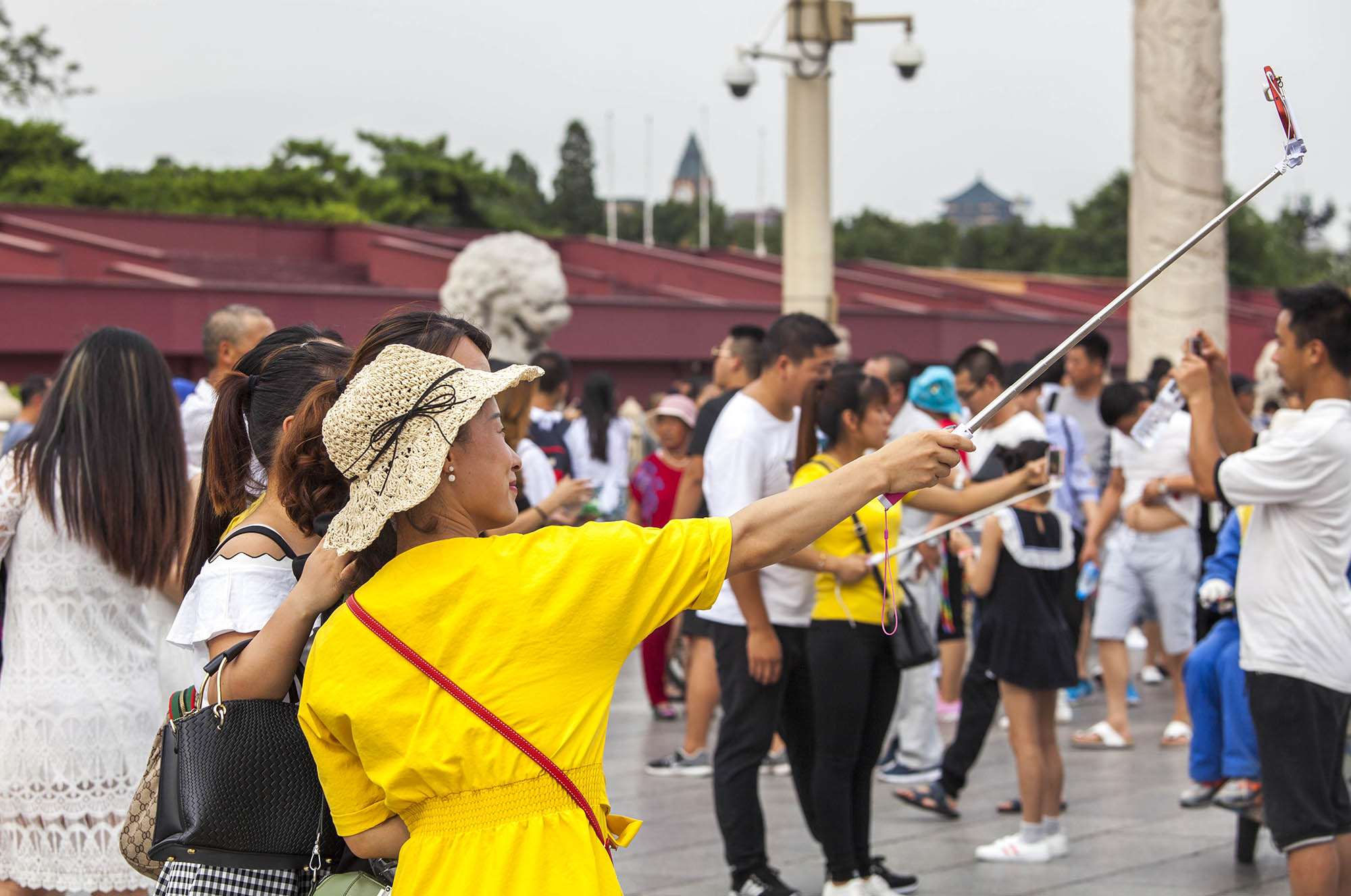
The tour turned out well. While I still prefer solo travel, having some structure made navigating China’s complexities more straight-forward, especially with the language. It also allowed me to focus on absorbing my surroundings, rather than worrying about logistics.
This 10-day itinerary reflects the highlights of that journey — combining must-see landmarks, cultural experiences, and practical tips to help you plan your own adventure. Whether you choose to go solo, join a group, or find a mix like I did, this China itinerary is designed to help you make the most of your time.
Disclosure: This article contains affiliate links. If you make a purchase through these links, I may earn a small commission at no extra cost to you. Thank you for supporting my blog!
Save this article for future reference!
10-Day China Itinerary Overview
➡ Days 1–3: Beijing
Begin your journey in the capital city, Beijing, where history and modernity converge. Explore iconic landmarks such as the Great Wall, the Forbidden City, and Tiananmen Square. Wander through the traditional hutongs and sample Beijing’s culinary highlights, including the famous Peking duck.
➡ Days 4–5: Xi’an
Head to Xi’an, the ancient heart of the Silk Road and home to the Terracotta Warriors. Cycle atop the city’s well-preserved walls and immerse yourself in the bustling Muslim Quarter, famous for its street food and cultural fusion.
➡ Days 6–7: Suzhou
Known as the "Venice of the East," Suzhou offers canal views and exquisite Classical Gardens. Experience the charm of traditional Chinese architecture, peaceful gondola rides, and the delicately balanced flavours of Suzhou cuisine.
➡ Days 8–10: Shanghai
Conclude your adventure in Shanghai, a city of contrasts where futuristic skyscrapers rise alongside historic landmarks. Stroll along The Bund, visit the Yuyuan Garden, and marvel at the cityscape from the Oriental Pearl Tower. Indulge in local delicacies like soup dumplings before your journey comes to a close.
BEIJING (北京)(Days 1-3)
Arriving in Beijing felt like stepping into a world of contrasts. The sprawling city, cloaked in pollution, introduced itself with a mix of overwhelming sights and subtle cultural nuances.
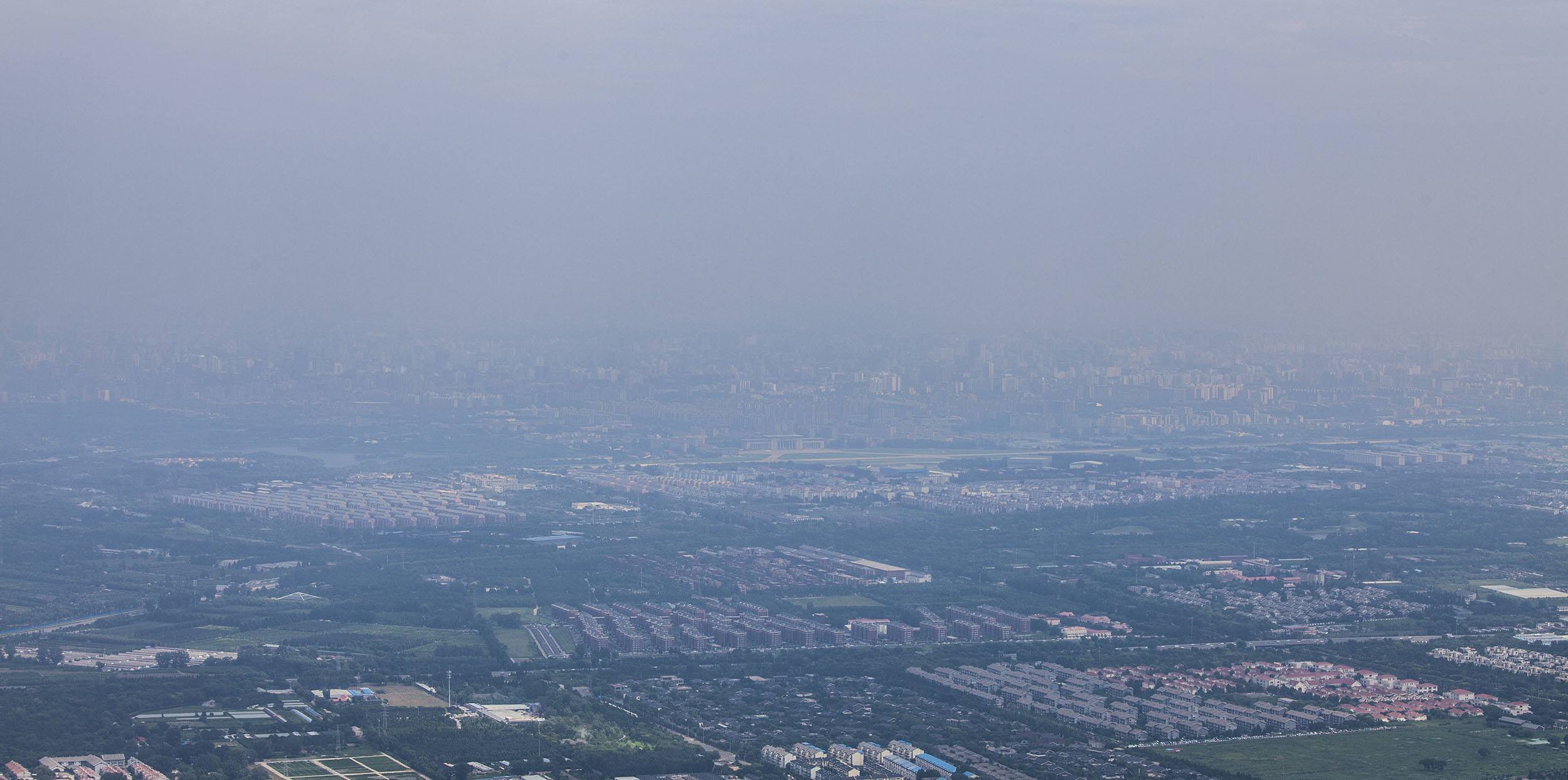
With nearly 17 million people, it quickly became clear that navigating Beijing required adaptability.
A piece of paper with my hotel’s address in hànzì saved me from confusion during my taxi ride, a small moment that underscored the importance of preparation in a place where English isn’t widely spoken.
While my initial impression was shaped by traffic jams and towering gray skyscrapers, I soon discovered Beijing’s layers. From the echo of history at Tiananmen Square to the bustling energy of its streets, the city invited me to embrace its rhythm — both the ancient and the modern.
Things to Do and Experience in Beijing
Beijing is a city of contrasts, where ancient history and modernity coexist in every corner.
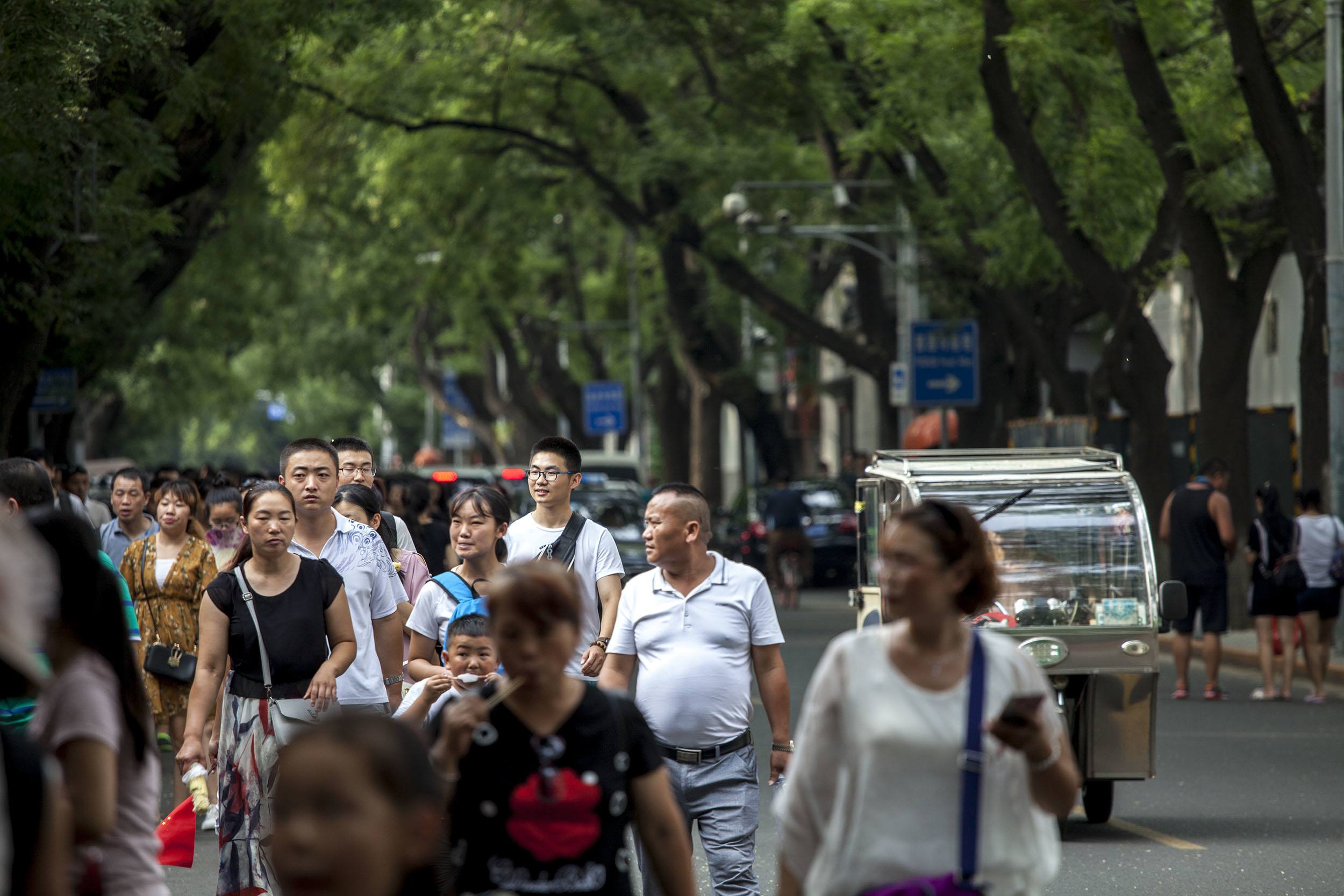
Walking through the Forbidden City, the scale of imperial China becomes almost overwhelming. Built in 1406 during the Ming dynasty, this massive complex was home to 24 emperors over nearly 500 years. Its red walls and golden roofs reflect the kind of meticulous detail that defined China's dynastic era.
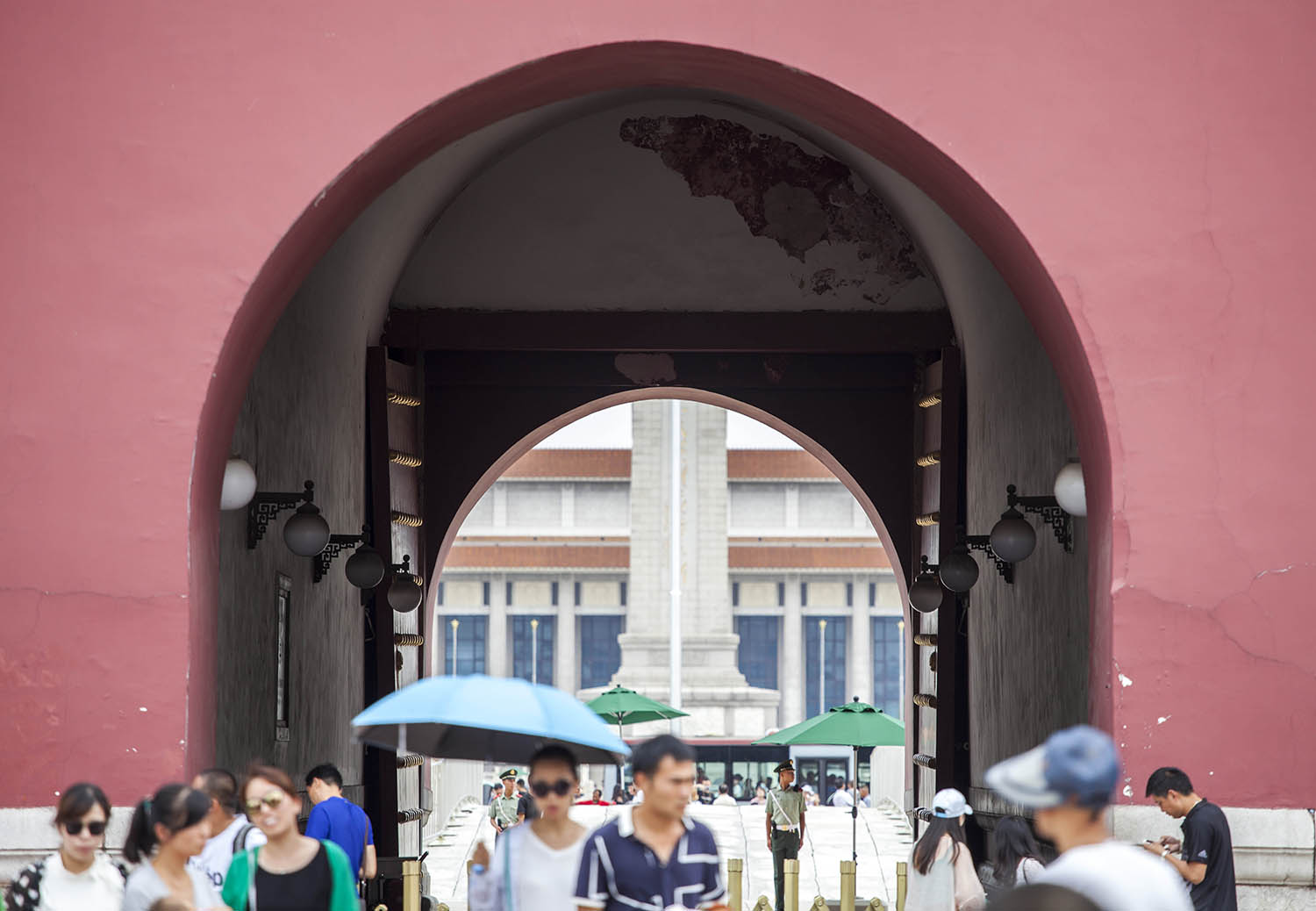
I found myself wandering through its countless courtyards, each more elaborate than the last, trying to imagine what life was like for those who lived behind these gates.
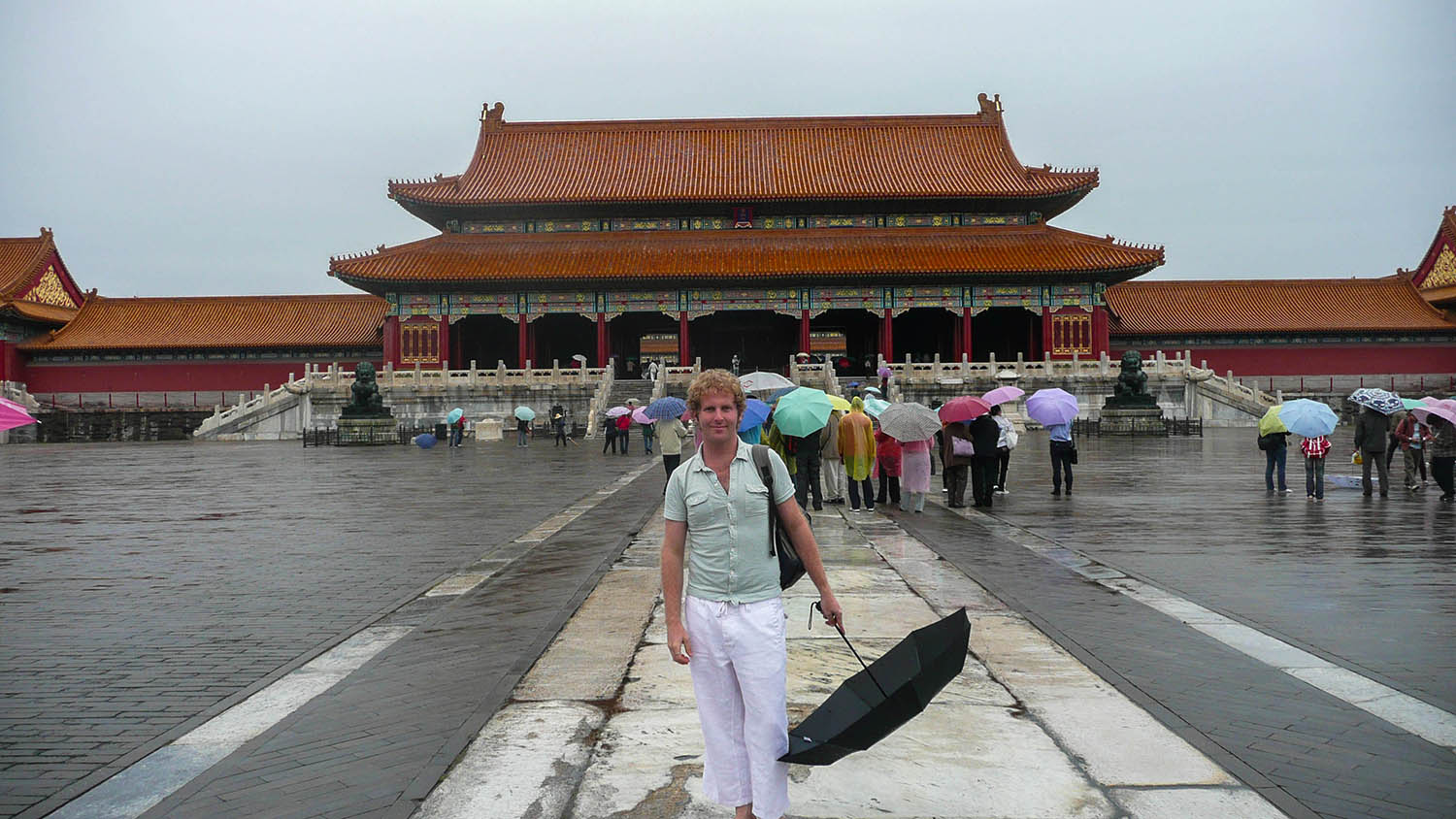
Outside, in Tiananmen Square, the weight of history felt equally immense but entirely different. A vast open space at the heart of Beijing, it has borne witness to pivotal moments in modern Chinese history. Standing there, surrounded by throngs of visitors, I couldn’t help but reflect on how this square represents the intersection of China’s past and its present — a place both revered and complex.
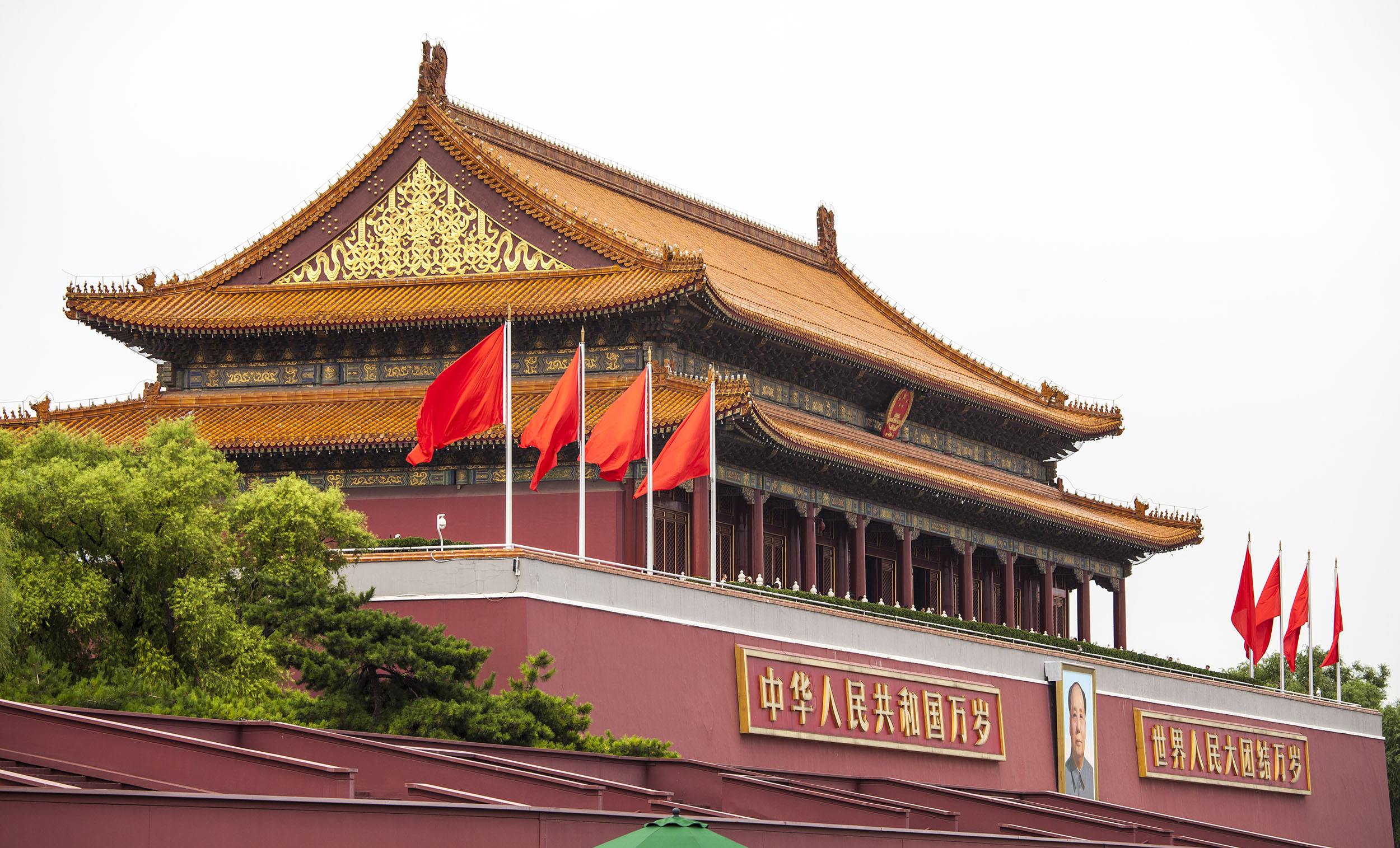
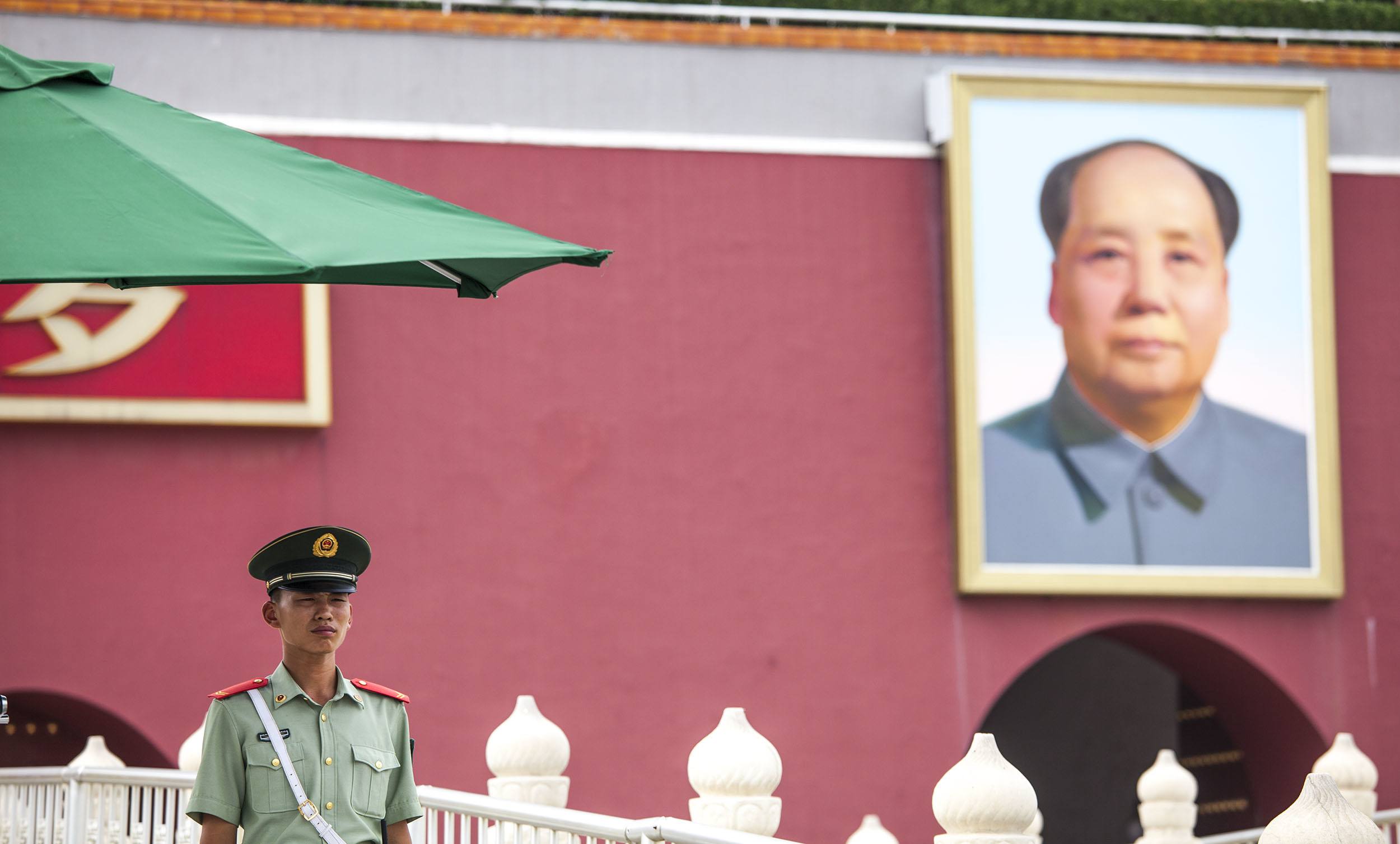
Not far away, Beijing’s hutongs provided a stark contrast to the grandeur of Tiananmen and the Forbidden City.
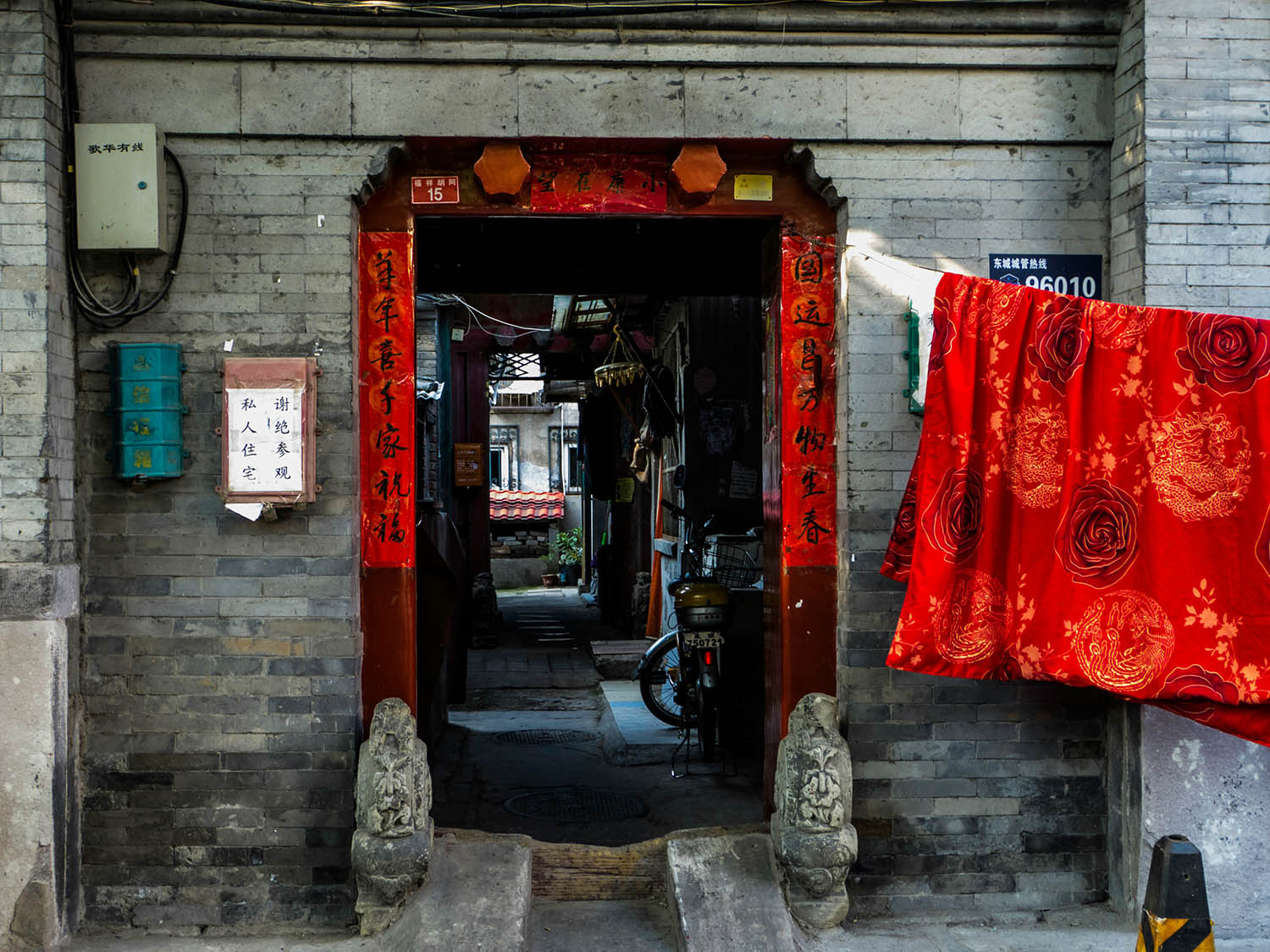
These narrow alleyways date back to the Yuan dynasty (1271–1368) and are home to traditional courtyard residences. I spent hours wandering through these quiet lanes, where locals played chess, hung their washing, and chatted over bowls of noodles. It was here that I felt the rhythm of everyday life in Beijing — a slower, more intimate pace compared to the city’s bustling avenues.
No visit to Beijing is complete without experiencing the Great Wall of China, and the Mutianyu section is a perfect choice for its well-preserved condition and smaller crowds.
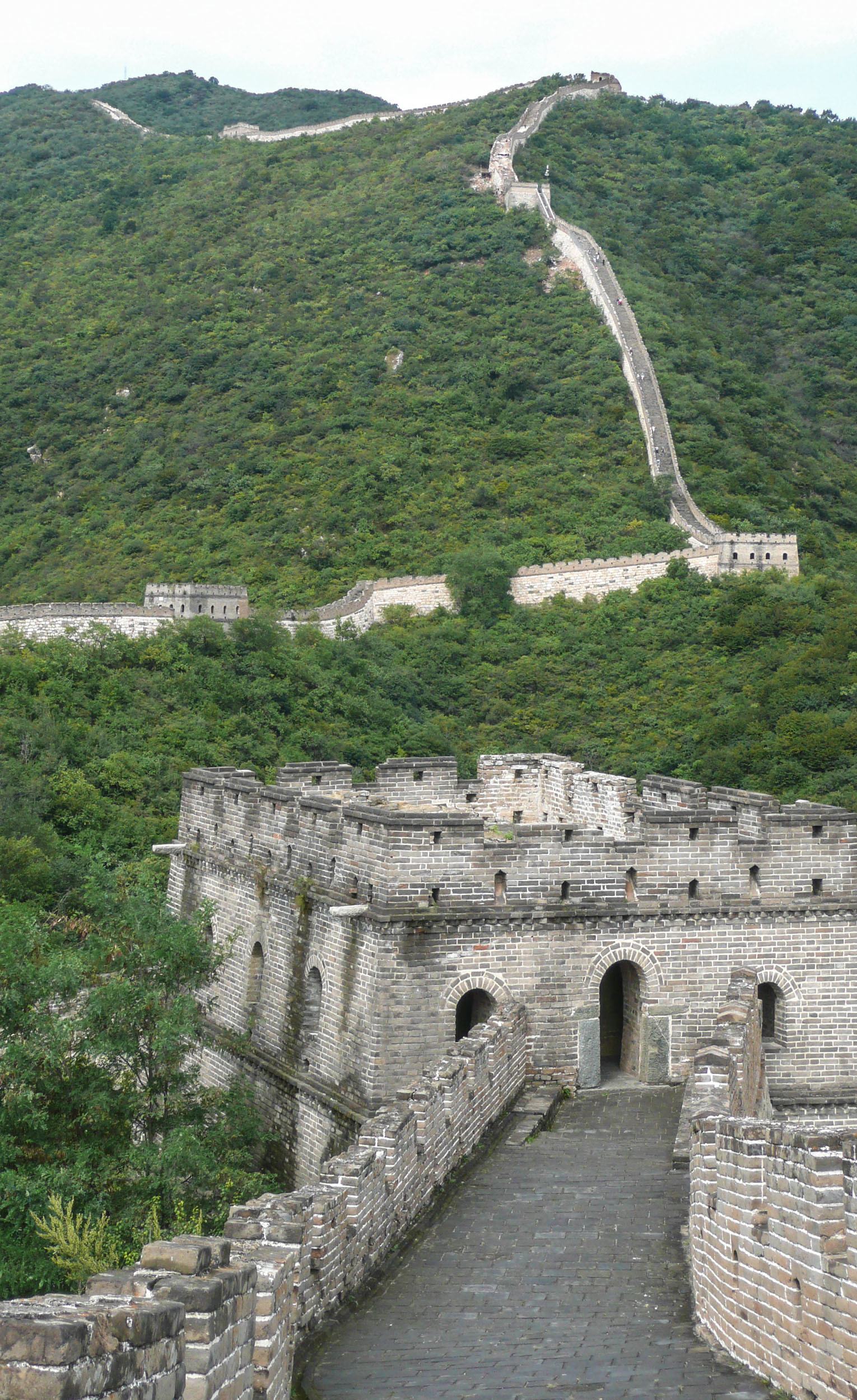
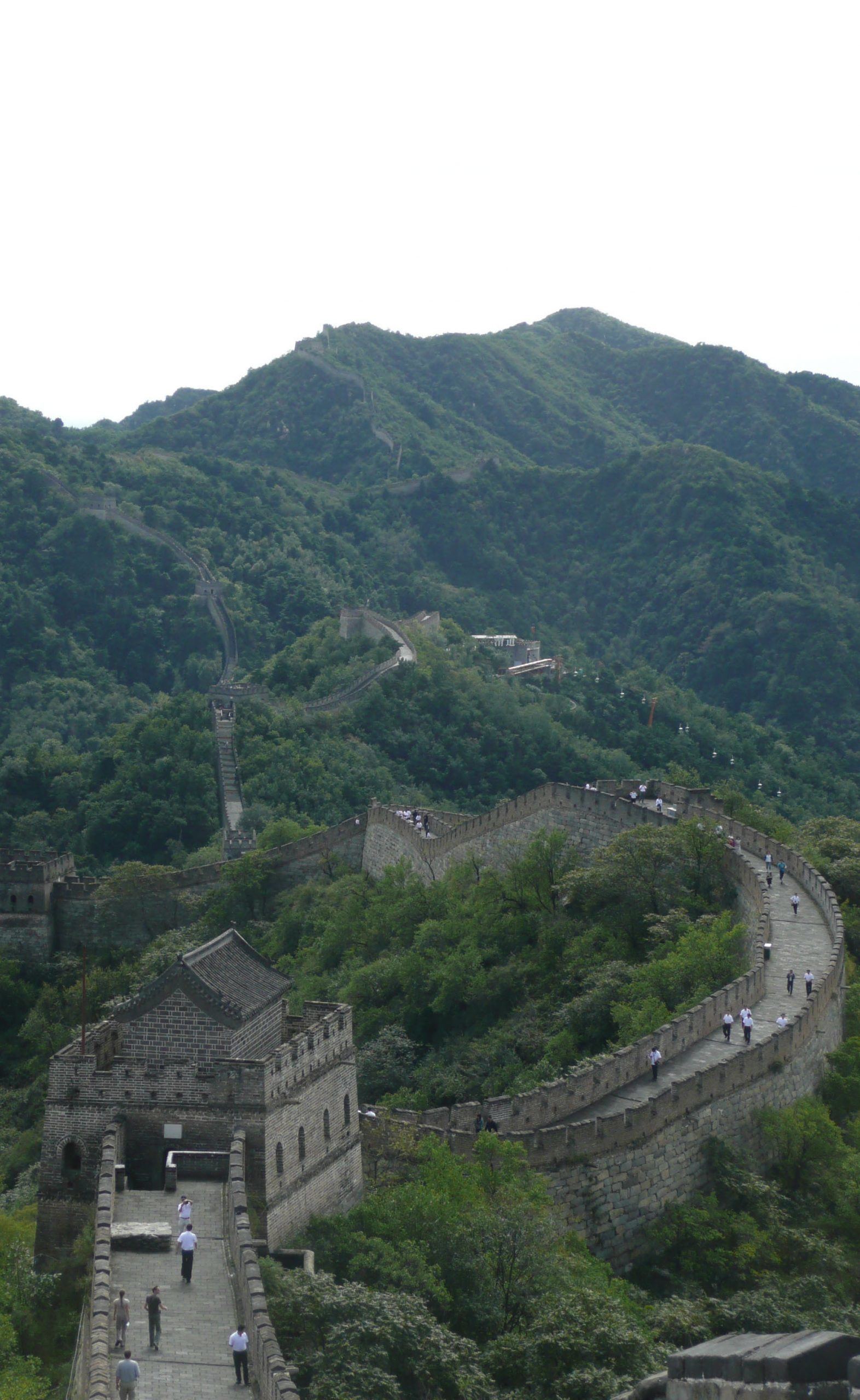
Built to defend against nomadic invasions from the north, the Wall stretches over 8,850 kilometres, an enduring testament to China's resilience and ingenuity. As I walked along its rugged stone path, gazing out at the mountains beyond, I felt a deep respect for the sheer scale of human effort that created this wonder.
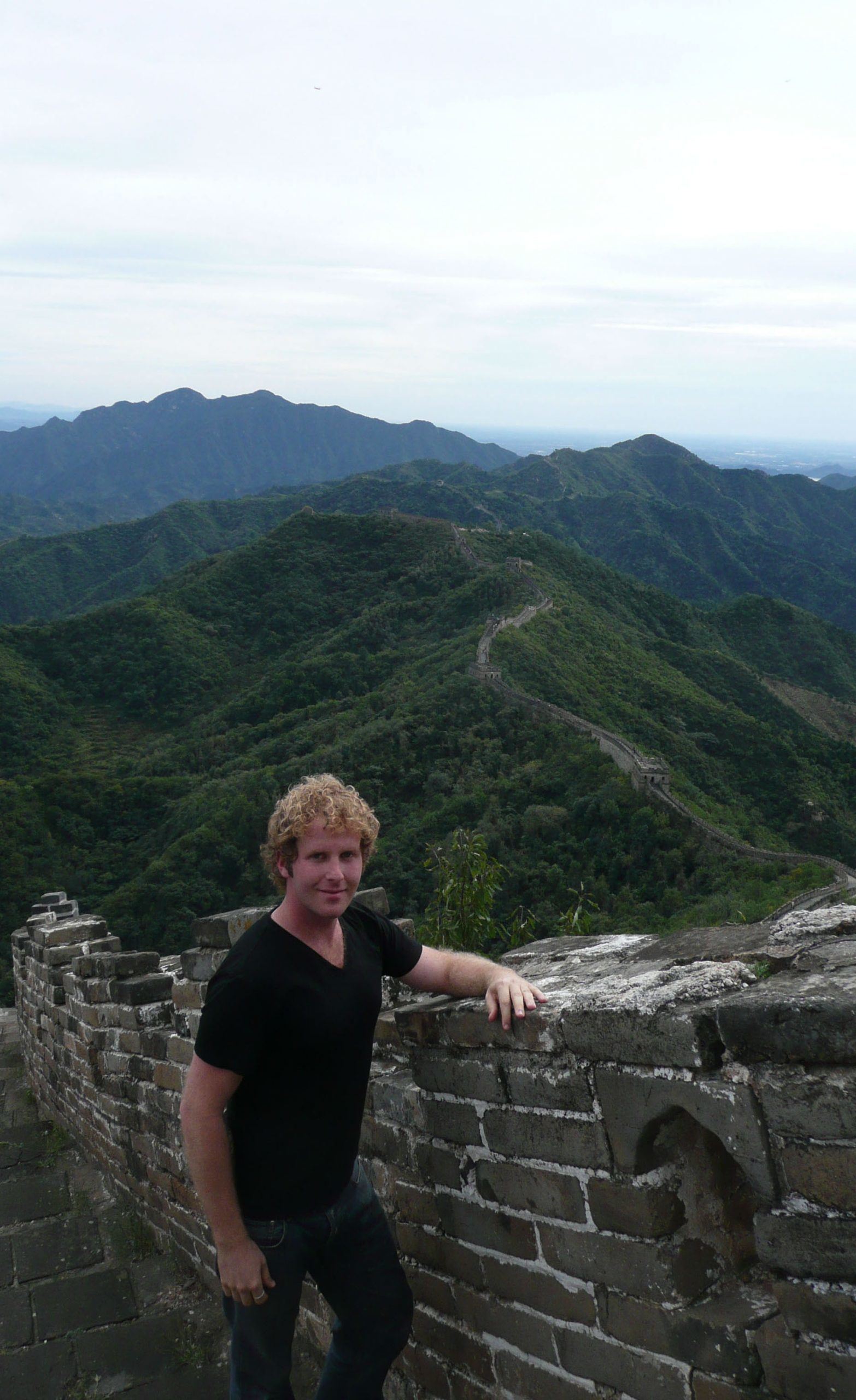
For a moment of peace amid the chaos, the Summer Palace is a must-visit.
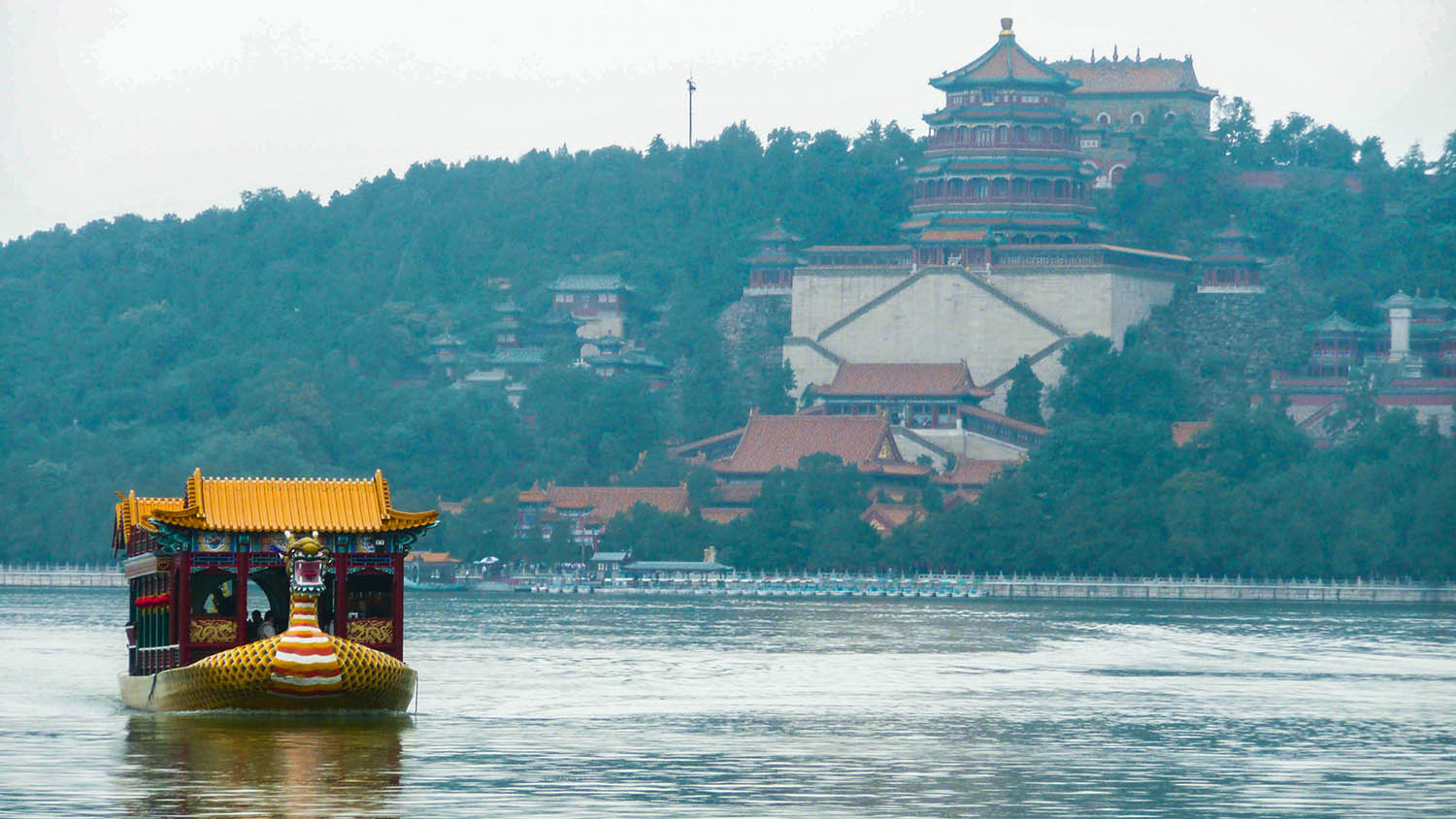
Built as a retreat for emperors during the Qing dynasty, its expansive gardens, serene lake, and intricate bridges offer a glimpse into the more tranquil side of imperial life. I spent an afternoon here, watching locals row boats across Kunming Lake and taking in the beauty of Longevity Hill.
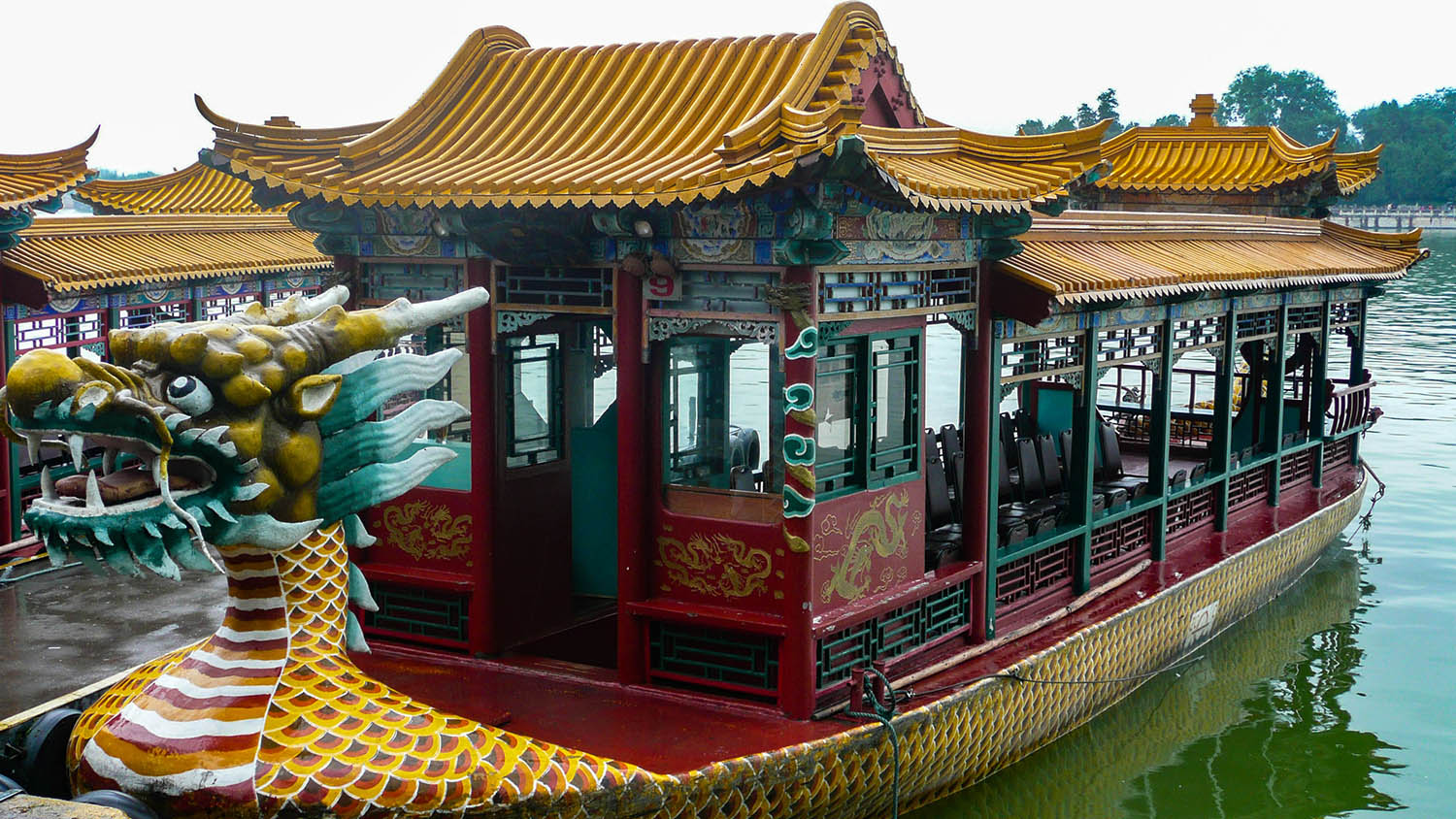
And then, of course, there’s the food. Beijing’s Peking duck is a culinary icon that lives up to its reputation. At a local restaurant, I watched as the chef carefully carved the duck tableside, presenting it with precision. The crispy skin paired with soft pancakes and sweet bean sauce was unforgettable.
In stark contrast, the street food at Wangfujing Night Market pushed the boundaries of my culinary courage. I passed on the fried scorpions but couldn’t resist trying the crickets, which were surprisingly crunchy and nutty. I also indulged in dumplings and skewers that left me craving more.
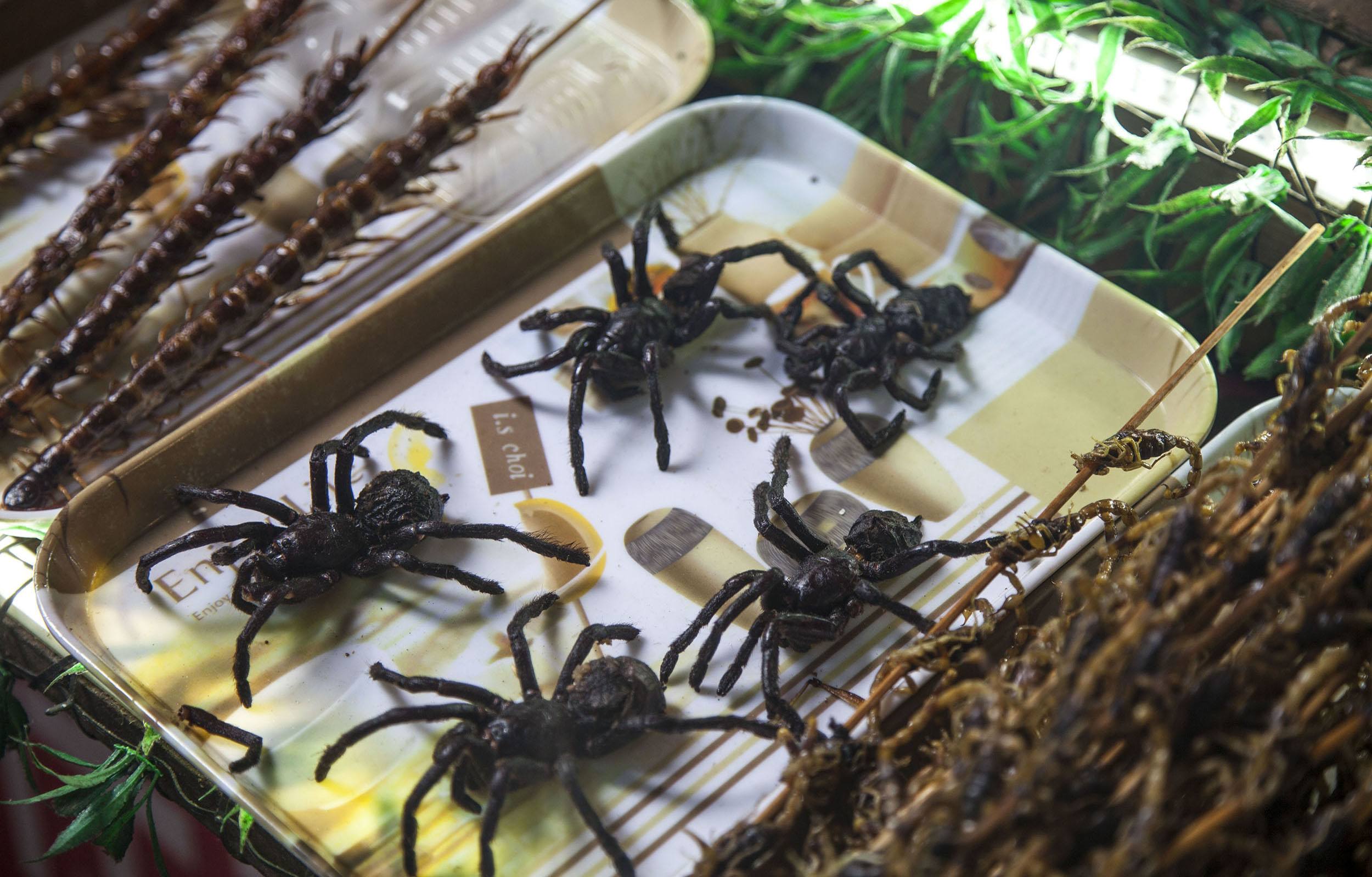
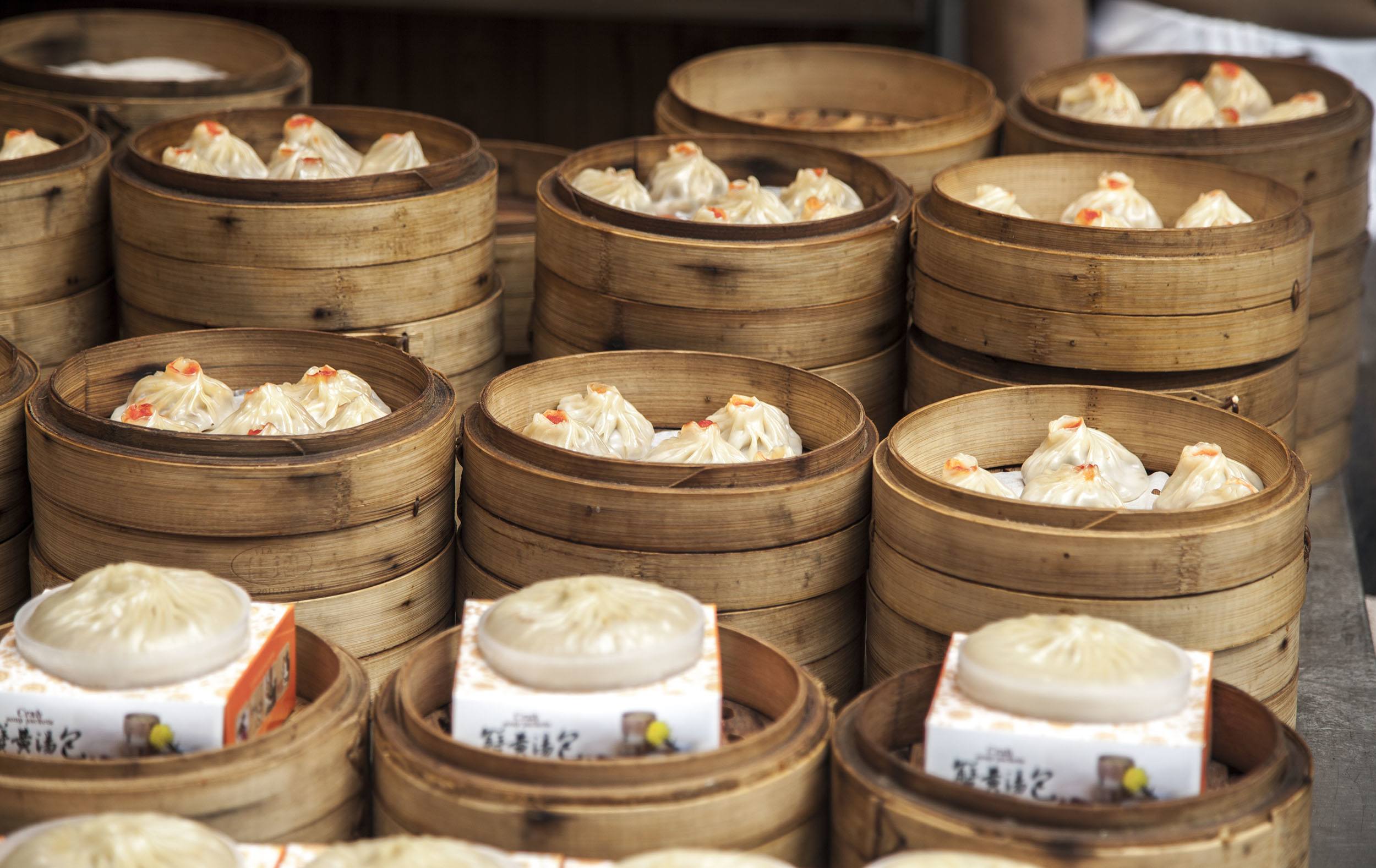
Beijing’s magic lies in its layers — its ability to overwhelm you with history one moment and charm you with its simplicity the next. From imperial palaces to quiet hutongs, it offers both grandeur and intimacy, making it a destination where every corner tells a story worth hearing.
Accommodation – Staying in Beijing
Beijing offers a wide range of accommodation options, from luxury hotels near Tiananmen Square to budget-friendly hostels in the hutongs.
Budget: Peking International Youth Hostel
Experience comfort on a budget at the Peking International Youth Hostel, located just a 2-minute walk from the subway and nestled in Beijing’s Nan Luo Gu Xiang Hutong district.
With dorms, private rooms, and even luxury options, this hostel offers a homey stay near top attractions like the Forbidden City and Houhai Lakes. Relax with afternoon tea on the terrace overlooking the Botanic Gardens or explore Beijing with the help of the concierge, making it an ideal base for your adventure in the city.
Mid-Range: Yinmo Hotel Beijing Tiananmen Square Branch
For a mid-range option in the heart of Beijing, Yinmo Hotel Beijing Tiananmen Square Branch is an excellent choice, just a 5-minute walk from Qianmen and Zhusikou Metro Stations. Located within walking distance of Tian’anmen Square, this hotel offers a comfortable stay with air-conditioned rooms, private or shared bathrooms, and convenient amenities like free WiFi, an on-site restaurant, and a bar.
The 24-hour front desk provides tour and ticketing services, making it an ideal base for exploring Beijing’s top attractions.
➡ Click here to book Yinmo Hotel Beijing Tiananmen Square Branch
High End: Grand Hyatt Beijing
Stay in luxury at the Grand Hyatt Beijing, perfectly located at the intersection of Chang’an Avenue and Wangfujing Pedestrian Street, with the Forbidden City and Tiananmen Square just a short stroll away.
This high-end hotel offers elegantly decorated rooms with Italian marble bathrooms, a resort-style indoor pool, and gourmet dining across five outstanding restaurants. Enjoy easy access to top attractions via the nearby Wangfujing Subway Station (Line 1) and a range of amenities, including a fitness centre, sauna, and business facilities.
Food – Eating in Beijing
Beijing's food scene is as diverse as the city itself, offering everything from iconic dishes to humble street fare.
For breakfast, try jianbing, a savoury Chinese crepe filled with eggs, vegetables, and crispy crackers, often sold from street carts. Lunchtime is perfect for a bowl of zhajiangmian (noodles with soybean paste), a staple of northern Chinese cuisine.
Beyond the classics like Peking duck, the hutongs are a treasure trove of hidden gems, from family-run dumpling shops to quirky cafés. If you’re exploring Wangfujing, skip the gimmicky snacks and head for the nearby food courts, where you can find traditional dishes like baozi (steamed buns) or lamb skewers, often at a fraction of the price.
Eating in Beijing isn’t just about the food — it’s about exploring the city through its flavours.
Transportation – Getting around Beijing
Beijing is a massive city, but getting around is relatively straightforward with a mix of modern and traditional transportation options.
➡ On Foot
Many areas, such as the hutongs and attractions like Tiananmen Square and the Forbidden City, are best explored on foot. Beijing’s wide streets and pedestrianised zones make walking a great way to soak in the atmosphere, but distances can be deceiving — wear comfortable shoes.
➡ By Bicycle
Cycling is a popular way to navigate Beijing’s flat terrain, especially in hutong areas. Bike-sharing apps like Mobike and Ofo are widely available, though they require registration. Dedicated bike lanes make this a pleasant option for short distances.
➡ By Subway
The Beijing Subway is one of the most efficient ways to get around the city. With over 20 lines and more than 400 stations, it covers nearly every corner of Beijing, making it indispensable for navigating its sprawling layout. The subway is also budget-friendly, with fares ranging from ¥3 to ¥9 depending on distance.
To make your journey smoother, consider purchasing a Yikatong Card, a reloadable smart card that can be used on the subway, buses, and even some taxis. You can buy one at any subway station for a ¥20 deposit, and it saves time when switching between lines or modes of transport.
English signage is available throughout the system, and most ticket machines offer an English option, making it easy for first-time visitors to use. However, avoid travelling during rush hour if possible — trains can get overwhelmingly crowded.
For planning your routes, apps like "Beijing Subway" (from the App Store) or a simple Google Maps search will help you navigate with ease.
➡ By Bus
Beijing has an extensive bus network that’s inexpensive but less straightforward for non-Mandarin speakers. If you’re feeling adventurous, buses are a good way to experience local life and reach destinations not covered by the subway.
➡ By Taxi and Ride-Hailing Apps
Taxis are widely available but may require some patience if drivers don’t speak English. Have your destination written in Chinese characters (hànzì) to make communication easier.
Apps like Didi (China’s Uber equivalent - Google Play and App Store) can be a more reliable option, especially if you’re comfortable using the app in Chinese or with translation tools.
➡ By Private Drivers or Tours
For day trips to places like the Great Wall or the Summer Palace, hiring a private driver or joining a small tour can save time and effort. Many drivers offer competitive rates, but ensure the details (e.g., price and itinerary) are agreed upon in advance.
Transportation – Getting to Beijing
Beijing, as a major international hub, offers a variety of options for getting there.
➡ By Air
Most international travellers arrive at Beijing Capital International Airport (PEK), one of the busiest airports in the world. It was my point of entry on this particular trip. It’s well-connected to major cities across the globe and serves as a gateway to China.
For those travelling domestically, Beijing Daxing International Airport (PKX) is another option, known for its futuristic design and efficiency. Both airports offer excellent transport links into the city, including the Airport Express train, shuttle buses, and taxis.
➡ By Train
China’s high-speed rail network makes reaching Beijing by train fast and convenient – it’s how I arrived from Mongolia on my third trip to China.
The city has multiple train stations, with Beijing West Railway Station and Beijing South Railway Station serving as major hubs for high-speed trains. Travellers coming from nearby cities like Tianjin or as far as Shanghai and Xi’an often choose the train for its comfort and efficiency. Tickets should be booked in advance, especially during peak travel periods.
➡ By Boat
While Beijing is not directly accessible by water, travellers arriving via international cruise ports such as Tianjin Port can easily reach Beijing by train or private transfer. Tianjin, located about 130 kilometres away, is connected to Beijing via high-speed rail, making the journey seamless and efficient.
XI’AN (西安)(Days 4-5)
Xi’an greets you with an atmosphere that feels ancient yet alive, like a city caught in the pulse of two different worlds.
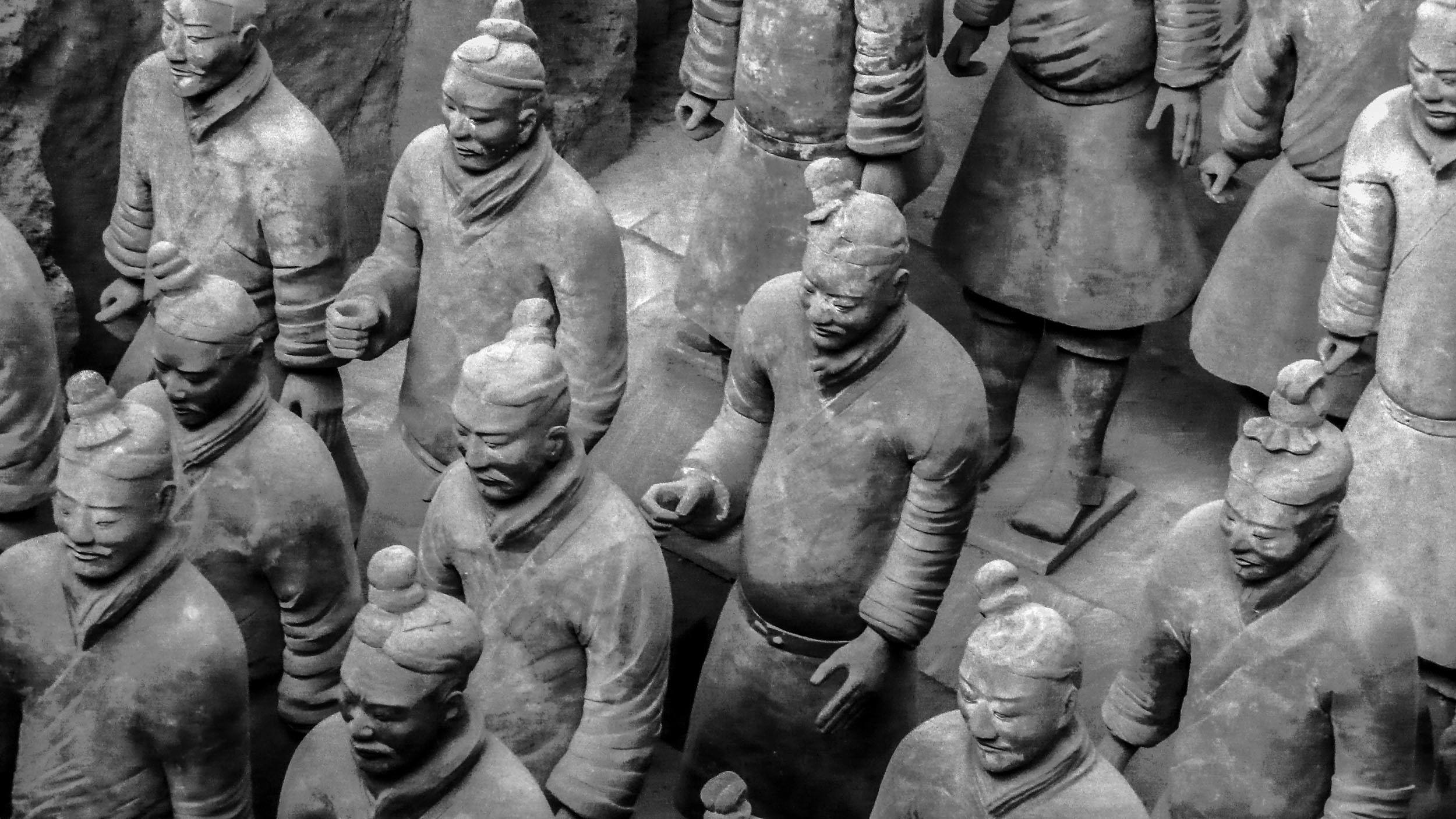
The streets hum with a distinct rhythm: vendors calling out to passersby, the hiss of steaming dumplings in tiny street-side kitchens, and the faint clang of bicycle bells echoing through the historic city walls. Here, the past isn’t tucked away in museums; it’s embedded in every corner of daily life.
As I cycled along the top of Xi’an’s imposing city walls, I felt an unusual sense of connection to the city’s history. The walls, among the best-preserved in China, enclose a maze of bustling alleys and towering modern structures, a physical reminder of Xi’an’s evolution from the heart of the Silk Road to a vibrant, modern metropolis.
It struck me that this was a place where the old and the new existed not as opposites, but as partners in shaping its identity.
And yet, history’s pull is undeniable. The Terracotta Warriors, lying in quiet formation on the city’s outskirts, are a testament to both human ambition and devotion. Standing before them, I was struck by their silent presence, each face carved with a unique expression, frozen in time but alive with stories of Emperor Qin Shi Huang's legacy.
But Xi’an is not all solemnity. In the Muslim Quarter, the scent of cumin and chili peppers wafts through the air as skewers sizzle over open flames. Lanterns sway overhead, and crowds jostle for bites of roujiamo (Chinese burgers) and yangrou paomo (a rich lamb soup with crumbled bread).
It’s a feast for the senses, one that reminds you that this city thrives on its energy as much as its history.
In Xi’an, the line between past and present blurs. It’s a place that reveals itself slowly, one story, one flavour, one moment at a time.
Things to Do and Experience in Xi’an
Cycling along the top of the Xi’an City Wall was one of those rare moments of quiet in an otherwise lively city (despite the rain!). The air carried the hum of the city, while the wall itself — a masterpiece of Ming dynasty architecture — stretched endlessly ahead.
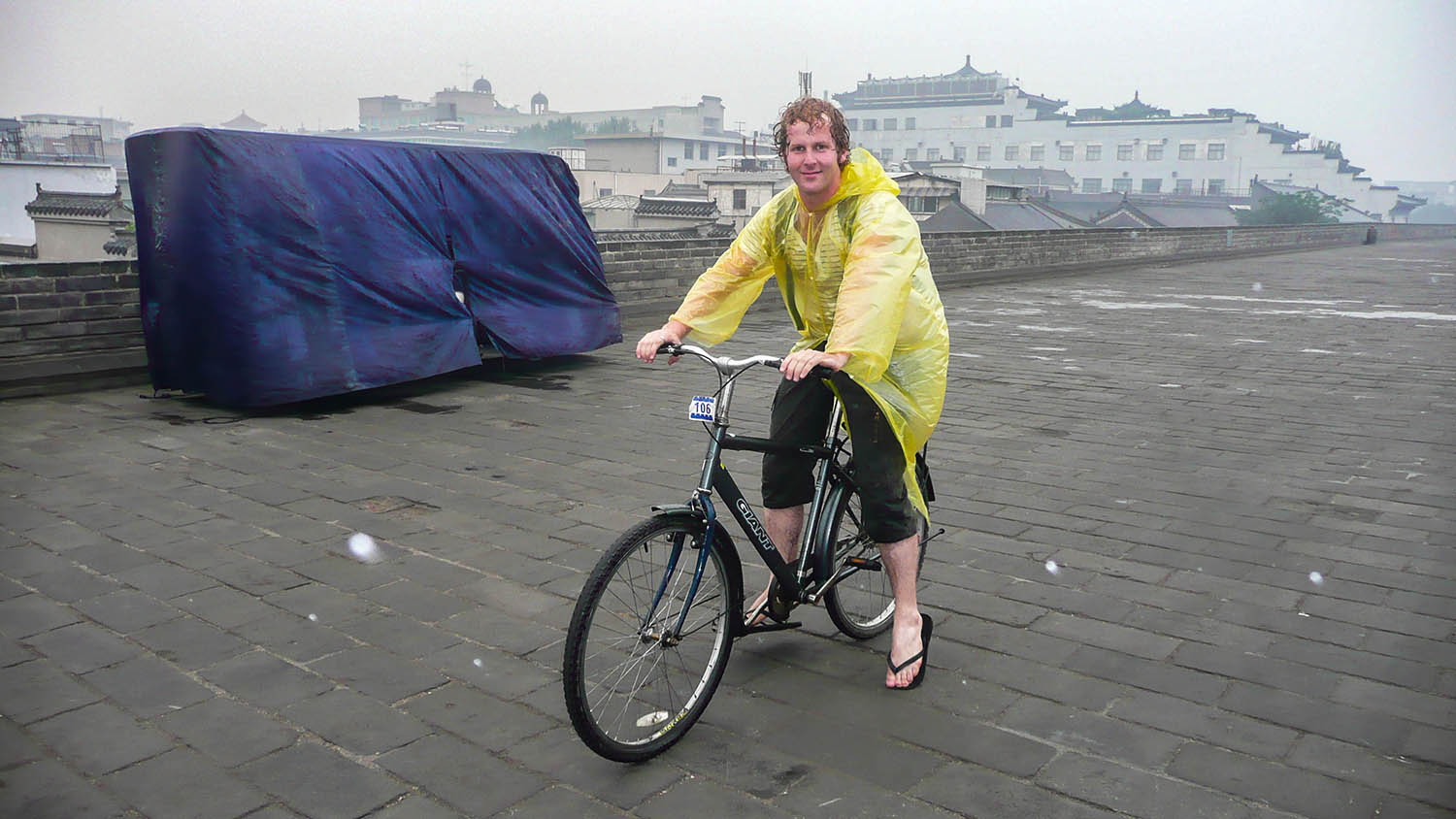
Built to defend the city from invaders, the wall is a symbol of strength and endurance, and riding along it gave me a unique perspective on how Xi’an has grown beyond its ancient boundaries.
The Terracotta Warriors, however, remain the city's undeniable centrepiece. Standing before these life-sized figures, I felt awed by the scale of Emperor Qin Shi Huang’s vision. Each warrior was unique — individual expressions, hairstyles, and armour reflecting the diversity of his army.
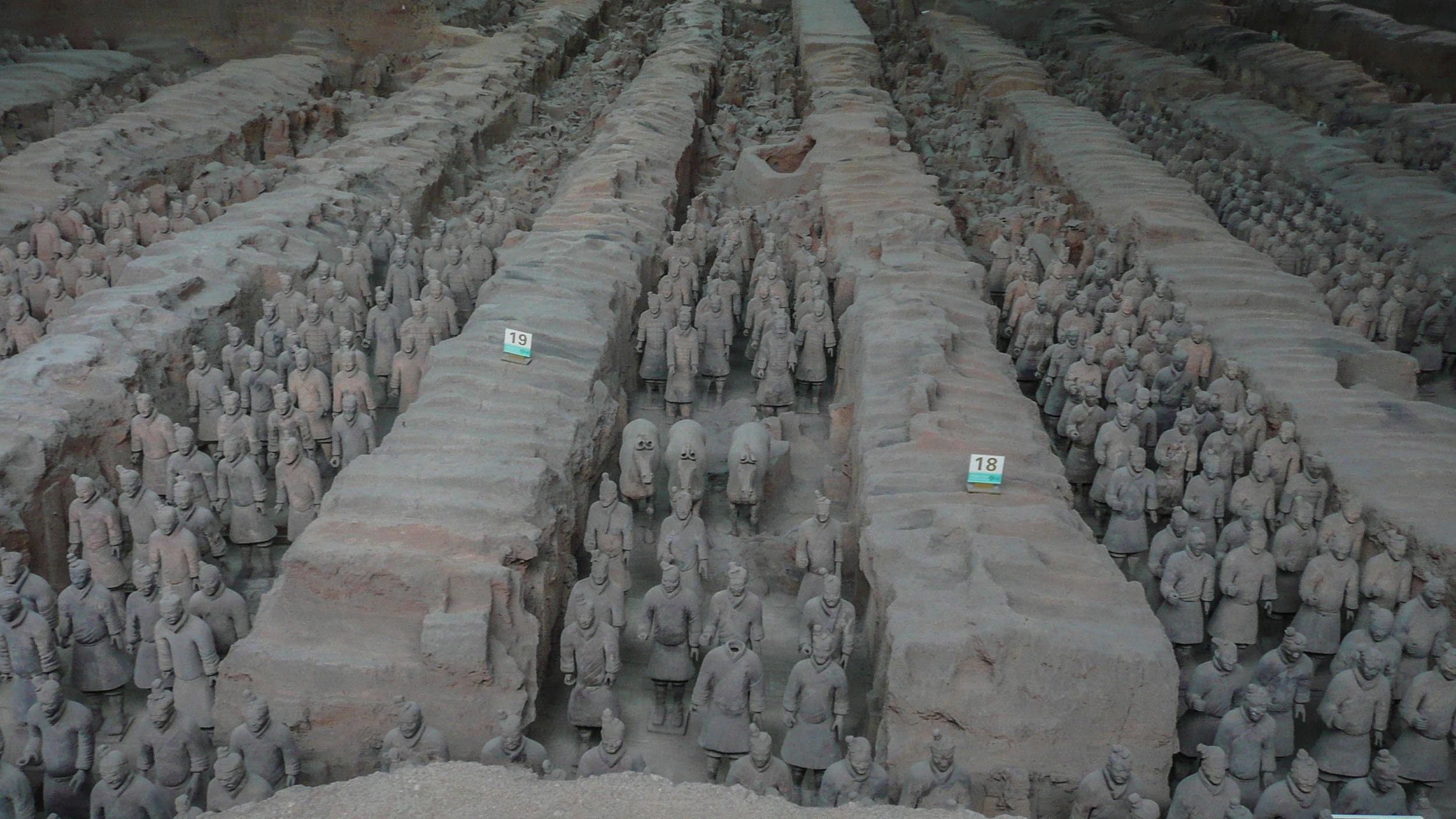
The rows of soldiers, horses, and chariots stretched across the excavation pits, a silent testament to an empire’s reach and ambition. It was a reminder of how deeply history shapes the present, and I couldn’t help but wonder about the craftsmen who spent decades bringing this extraordinary afterlife army to life.
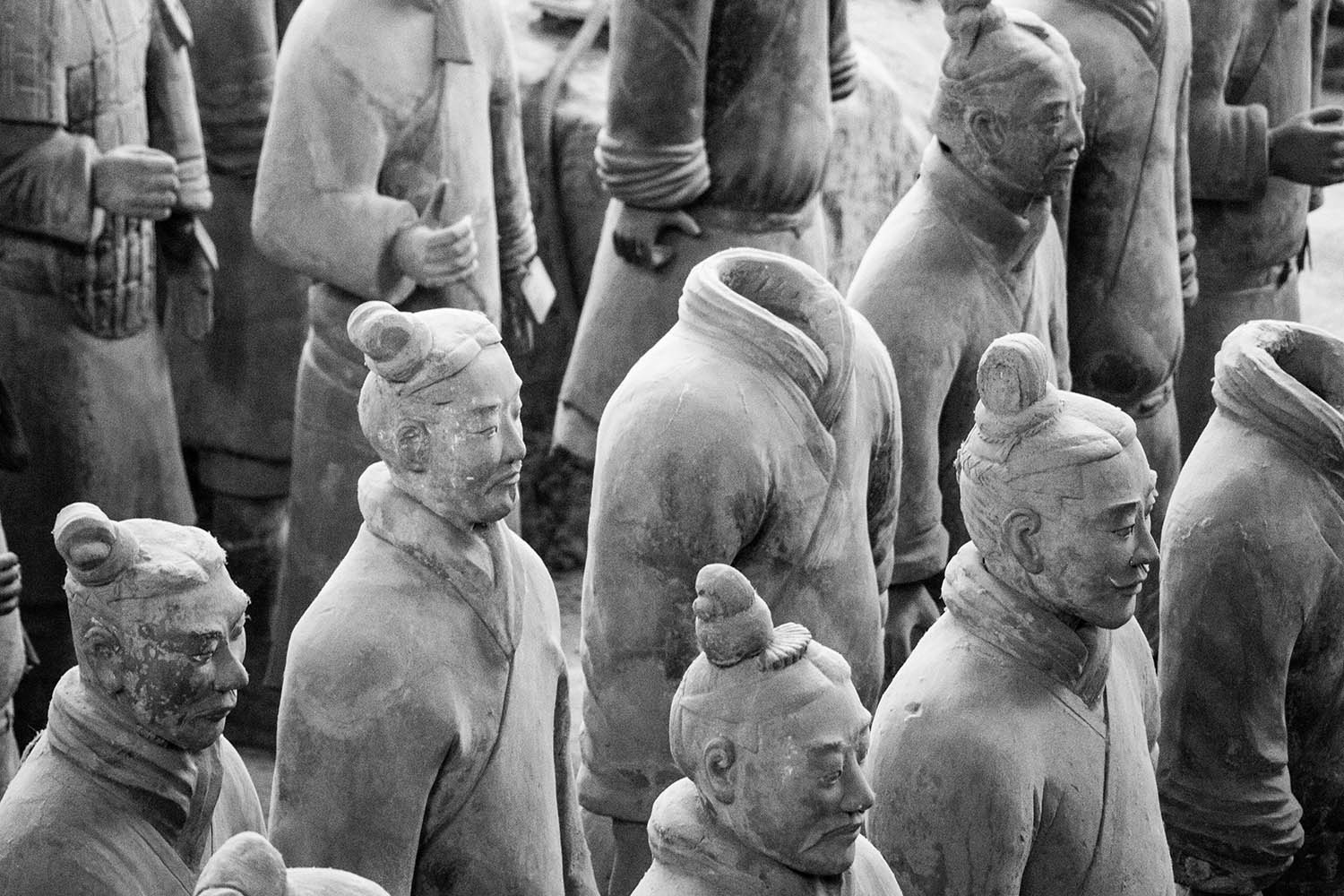
Back in the city, the Muslim Quarter is a feast for the senses. Wander through its narrow lanes, and be drawn to the sights, sounds, and especially the smells — skewers of lamb sizzling over open flames, the smoky sweetness of baked flatbreads, and the bold spices of roujiamo, a local version of a pulled-pork sandwich.
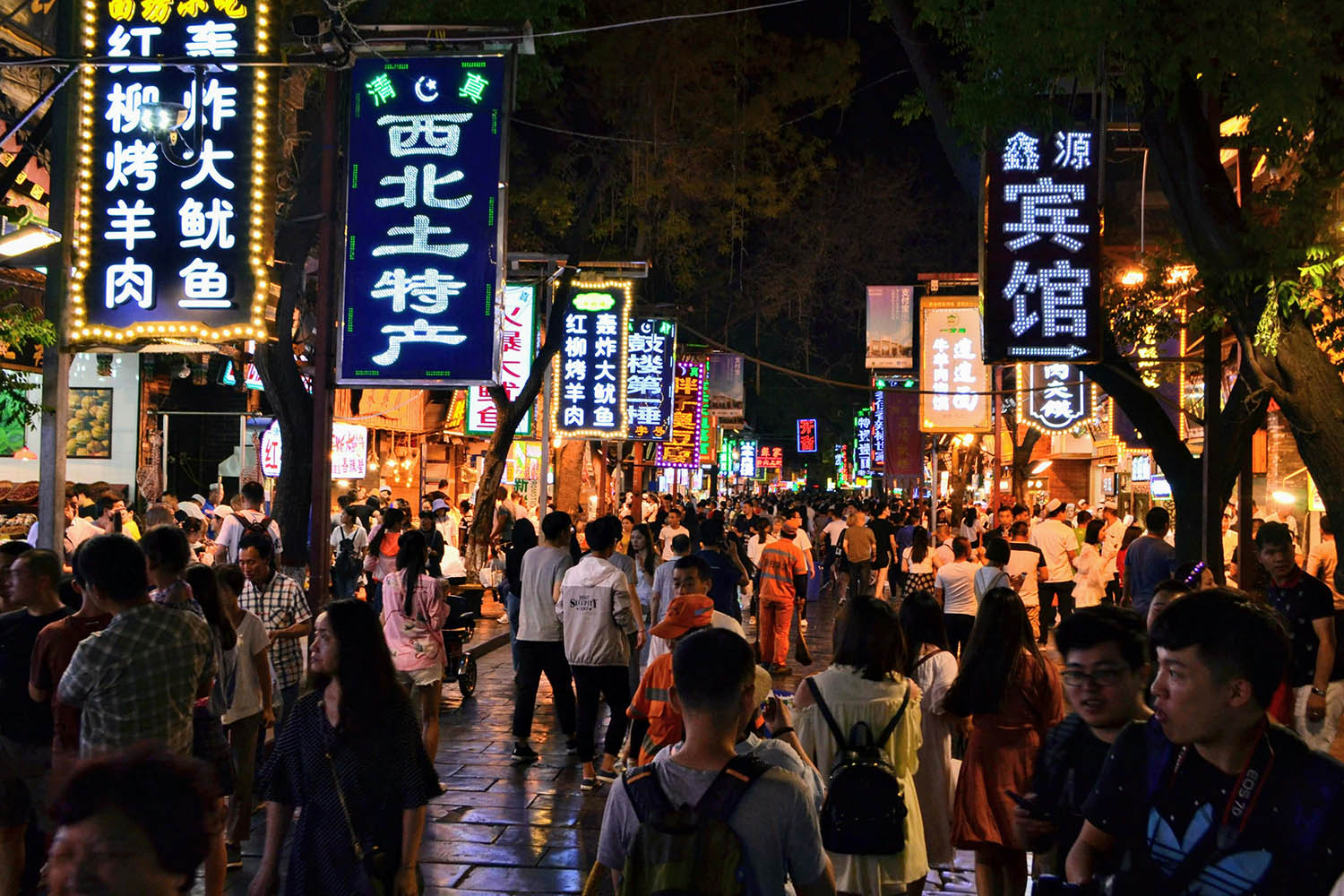
Between bites, admire the Great Mosque of Xi’an, a tranquil blend of Islamic and Chinese architectural styles, tucked away from the chaos of the streets.
A visit to the Shaanxi History Museum adds more depth to understanding Xi’an’s rich past. Although I didn’t visit it myself, its reputation for showcasing Xi’an’s role in the Silk Road makes it worth considering.
Artefacts from the Silk Road, Tang dynasty treasures, and ancient pottery bring to life the city’s role as the eastern terminus of the Silk Road. It’s easy to overlook how connected Xi’an once was to the rest of the ancient world, but the museum paints a vivid picture of its cosmopolitan legacy.
For something more serene, spend an evening at the Big Wild Goose Pagoda, and watch as the sun dips below the horizon and the fountains light up in a colourful display. This Tang dynasty structure is still a spiritual centre, and walking through its grounds offers a moment of peace in an otherwise bustling city.
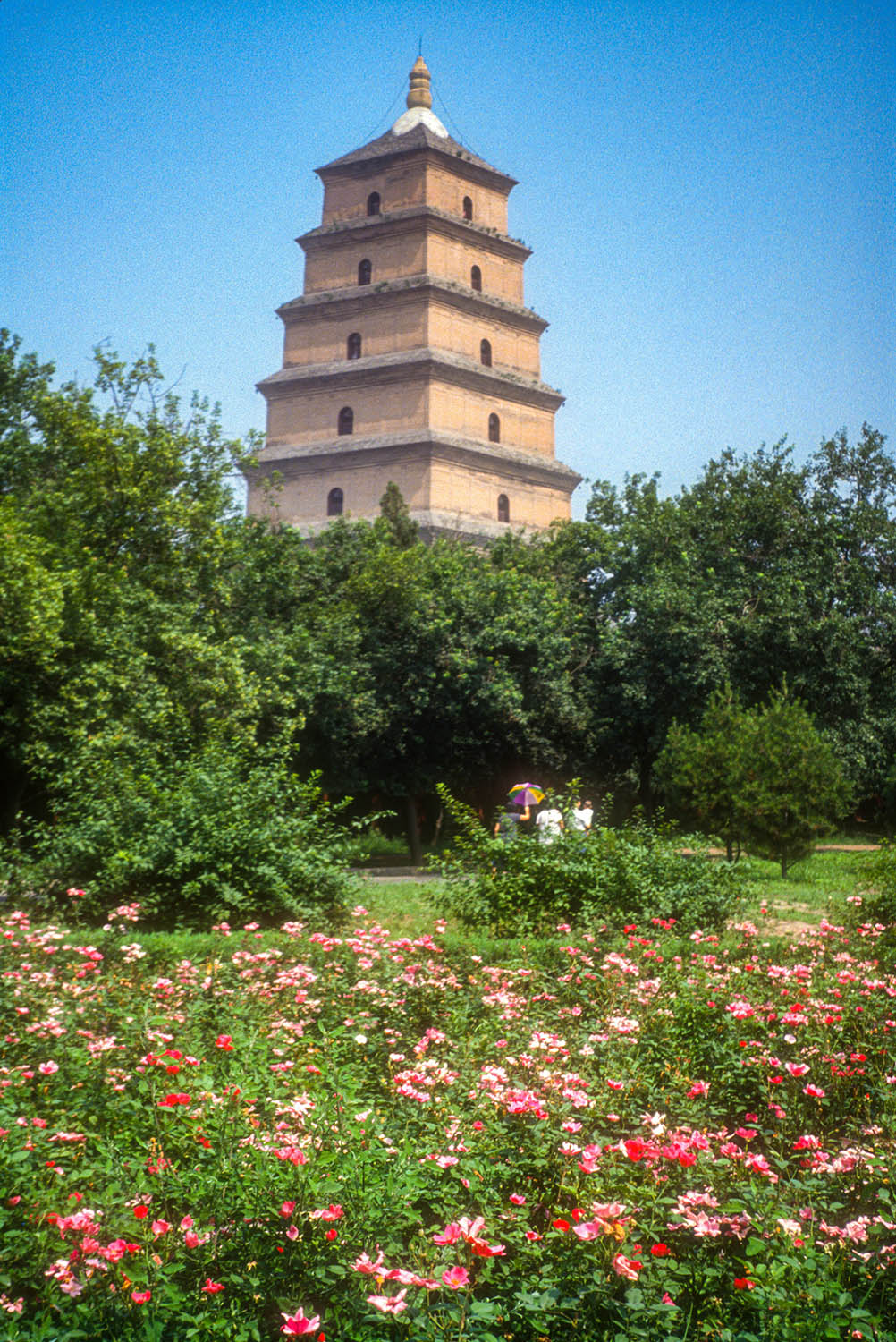
From its streets to its monumental landmarks, Xi’an invites you to delve deep.
Accommodation – Staying in Xi’an
Xi’an offers a range of accommodation options.
Budget: Hantang Inn Hostel Xi’an
Hantang Inn Hostel Xi’an offers a budget-friendly stay with a blend of Tang dynasty-inspired design and modern comfort in the heart of Xi’an. Located just a 5-minute walk from Zhonglou Subway Station and close to Muslim Street, it features amenities such as private showers, smart toilets, and five-star mattresses, along with homemade breakfasts and complimentary evening wine.
The hostel also provides a rooftop terrace, tour services for attractions like Mount Hua and the Terracotta Warriors, and unique activities like yoga and tea ceremonies for an unforgettable cultural experience.
Mid-Range: Honglu Garden Hotel Xi'an Bell and Drum Tower Huimin Street Store
For a mid-range stay in the heart of Xi’an, Honglu Garden Hotel offers cosy rooms with a natural style, just steps from Xi’an City Wall and a short stroll to Muslim Street. Enjoy free WiFi, a choice of Xi’an or Western-style breakfast, and convenient access to top attractions like the Small Wild Goose Pagoda and Shaanxi History Museum.
With a 24-hour front desk providing currency exchange, ticket booking, and luggage storage, plus the option to explore the area by bike, this hotel combines comfort, convenience, and cultural immersion.
➡ Click here to book Honglu Garden Hotel Xi'an Bell and Drum Tower Huimin Street Store
High End: Xi'an Eastern House
Experience five-star luxury with oriental elegance at Eastern House Boutique Hotel, located just a 5-minute walk from Xi’an City Wall. Featuring stylish rooms with garden or city views, free WiFi, and modern amenities like flat-screen TVs, the hotel ensures a comfortable and relaxing stay.
Enjoy local delicacies at the on-site restaurant, stay active at the fitness centre, and take advantage of the 24-hour front desk for concierge services, making it an ideal choice for exploring Xi’an’s downtown attractions like the Bell and Drum Towers.
Food – Eating in Xi’an
Xi’an’s food scene is a blend of bold flavours and cultural history, heavily influenced by its role as the starting point of the Silk Road.
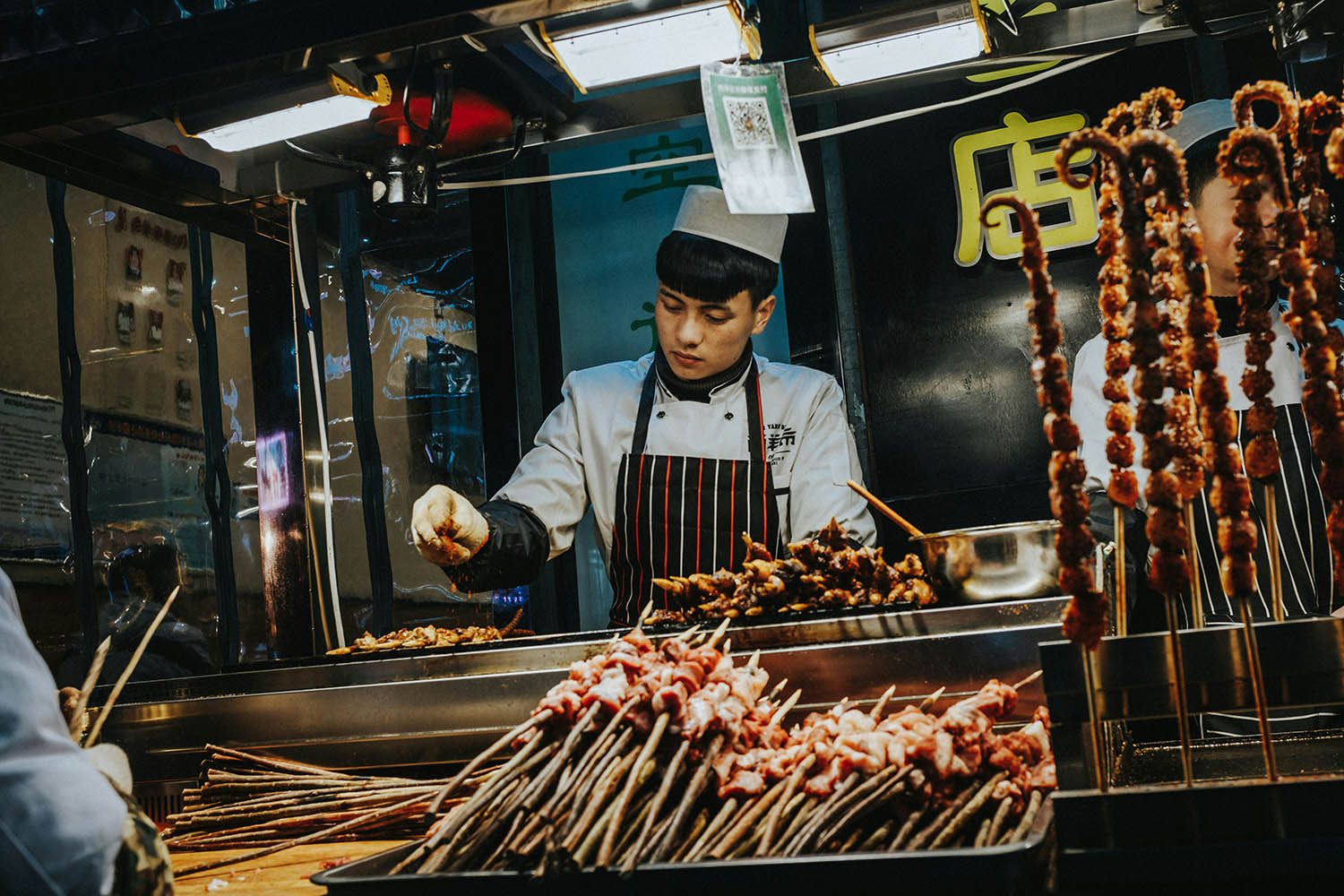
The Muslim Quarter is the best place to begin your culinary journey, with its street stalls and irresistible aromas. One must-try dish is roujiamo, often called the Chinese hamburger, featuring tender, spiced meat stuffed into freshly baked flatbreads.
Another staple is yangrou paomo, a hearty lamb soup served with crumbled bread that you break apart yourself before it’s soaked in the broth. This dish is as much about the experience as it is about the taste.
For those with a sweet tooth, try persimmon pancakes (shizi bing), a local dessert made from glutinous rice flour and filled with red bean paste, often found sizzling on street-side griddles.
Transportation – Getting around Xi’an
Xi’an offers a range of transportation options that make navigating the city and its attractions straightforward. Here’s a guide to help you get around.
➡ On Foot
Walking is one of the best ways to explore Xi’an’s historic core, particularly the Muslim Quarter and areas near the Xi’an City Wall. The streets are pedestrian-friendly, and wandering on foot lets you fully experience the city’s vibrant atmosphere.
However, distances between major sites like the Terracotta Warriors and the city centre are significant, so walking is best for exploring localised areas.
➡ By Bicycle
Cycling along the top of the Xi’an City Wall is a popular activity and a unique way to see the city from above. Bikes are available to rent at the wall’s entrances, and the flat, wide path makes it easy for riders of all levels.
Outside the wall, bike-sharing apps like Mobike and Hellobike (on the App Store) are widely available for short distances.
➡ By Bus
Xi’an’s extensive bus network is an affordable way to get around, with fares starting at just ¥2. Some routes are tourist-friendly, such as the buses connecting the city centre to the Terracotta Warriors.
While buses are efficient, signs and announcements are mostly in Mandarin, so having a translation app or knowing your route in advance is helpful.
➡ By Metro/Subway
The Xi’an Metro/Subway is modern and easy to navigate, with English signage and announcements. It’s a convenient option for reaching destinations like the Big Wild Goose Pagoda and Shaanxi History Museum.
The metro currently has multiple lines, and fares range from ¥2 to ¥6 depending on distance. The Xi’an Metro App (on the App Store and on Google Play [China-wide for the latter]) can be useful for route planning.
➡ By Taxi or Ride-Hailing Apps
Taxis are readily available in Xi’an and are metered, with fares starting at ¥10 for the first 2 kilometres. Ensure your destination is written in Chinese characters to avoid confusion.
Alternatively, ride-hailing apps like Didi offer a more convenient and reliable way to book rides, especially for longer trips.
➡ By Private Driver or Tour
For visiting attractions like the Terracotta Warriors, hiring a private driver or joining a tour is a time-saving option. Many drivers in Xi’an offer set rates for day trips, but it’s important to agree on pricing and itinerary details beforehand.
Tours often include additional perks like English-speaking guides.
Transportation – Getting to Xi’an
Reaching Xi’an is straightforward, with several options depending on your starting point and preferences.
➡ By Air
Xi’an Xianyang International Airport (XIY) is one of China’s busiest and most modern airports, located about 40 kilometres northwest of the city centre. It serves both domestic and international flights, making it a convenient option for travellers arriving from major cities like Beijing, Shanghai, and Chengdu, or international hubs such as Bangkok and Seoul.
From the airport, shuttle buses and taxis provide easy access to downtown Xi’an, while ride-hailing apps like Didi offer added convenience.
➡ By Train
I, along with the group, travelled to Xi’an from Beijing via high-speed train, departing from Beijing West Railway Station and arriving at Xi’an North Railway Station. The journey took just under 6 hours.
China’s high-speed rail network connects Xi’an to many major cities, making the train an efficient and scenic choice.
Xi’an North Railway Station is the hub for high-speed trains, with routes to Beijing (4-6 hours), Shanghai (6-8 hours), and Chengdu (3-4 hours). For a more traditional experience, overnight sleeper trains arrive at the Xi’an Railway Station closer to the city centre, offering a slower but budget-friendly option.
Tickets, especially for high-speed trains, should be booked in advance during peak travel seasons.
➡ By Bus
Long-distance buses are an alternative for those travelling from nearby provinces or smaller cities not served by trains. Xi’an’s long-distance bus stations are well-organised, but buses can be slower and less comfortable compared to trains.
This option is best for budget travellers with flexible schedules.
➡ By Car
For those seeking flexibility, renting a car and driving to Xi’an is possible, though not common for international travellers. Highways connecting Xi’an to other cities are well-maintained, but traffic within the city can be congested, and navigating unfamiliar roads may pose challenges without local knowledge.
Save this article for future reference!
SUZHOU (苏州)(Days 6-7)
Suzhou is a city that moves at its own pace, with canals instead of streets and gardens instead of chaos. It feels like stepping into a living painting, where life unfolds quietly along the water's edge. Known as the "Venice of the East," Suzhou’s canals are a lens into the rhythms of daily life.
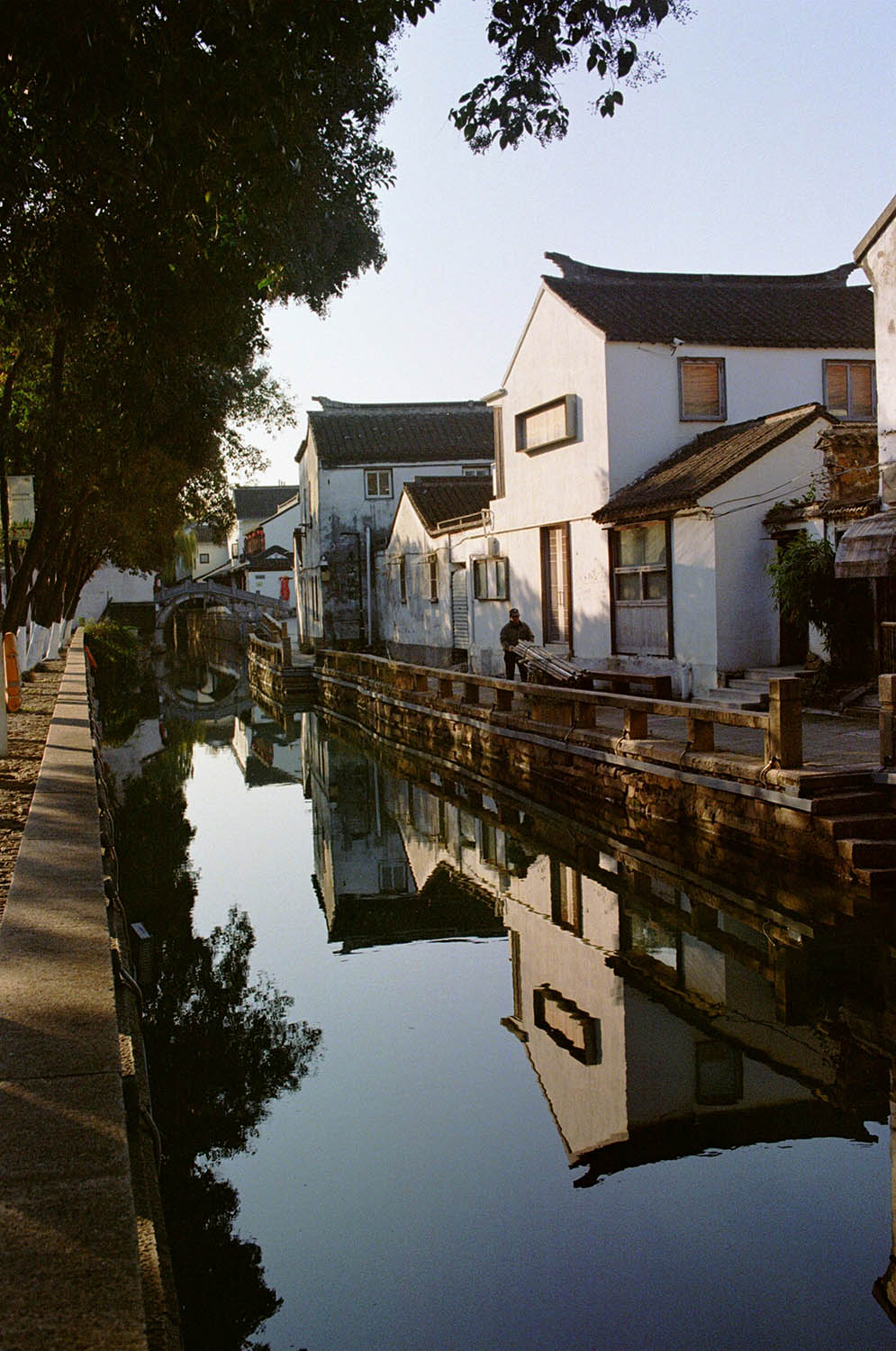
Small boats glide along the waterways, passing by homes that seem to lean into the water, their reflections rippling softly below. This rhythm of life has endured for centuries, and it’s easy to feel transported back in time as you explore.
Beyond its canals, Suzhou is famous for its Classical Gardens, masterpieces of balance and harmony. These historic retreats were designed not only for beauty but also for meditation and inspiration. Walking through one of these gardens, you’ll find yourself surrounded by carefully placed stones, flowing water features, and pavilions that feel like pieces of art themselves.
Yet Suzhou is not simply a museum piece. There’s a warmth and liveliness here, from bustling markets to the quiet hum of daily routines along the canals. Whether it’s the smell of fresh dumplings wafting from a local restaurant or the sight of neighbours chatting over tea, Suzhou feels alive and deeply connected to its past.
Things to Do and Experience in Suzhou
Gliding through Suzhou’s canals in a small gondola was like stepping into another world. As the boat gently cut through the water, I watched daily life unfold along the banks. Locals hung laundry from lines, poured kitchen scraps into the canals, and chatted with neighbours, all while tourists like me floated past in quiet curiosity.
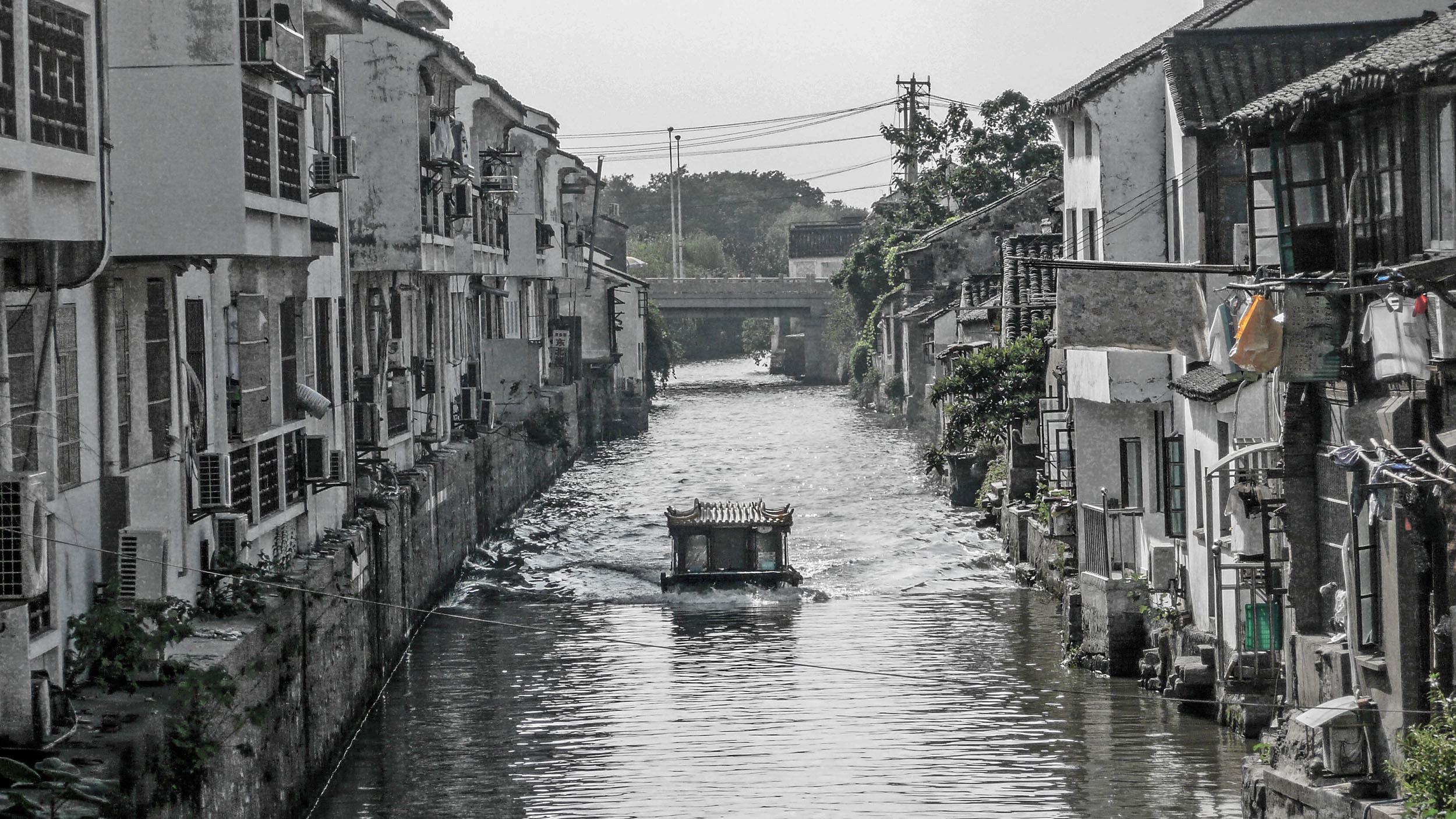
Despite its tourist appeal, the canals maintain an authentic charm, offering a glimpse into the city’s daily life.
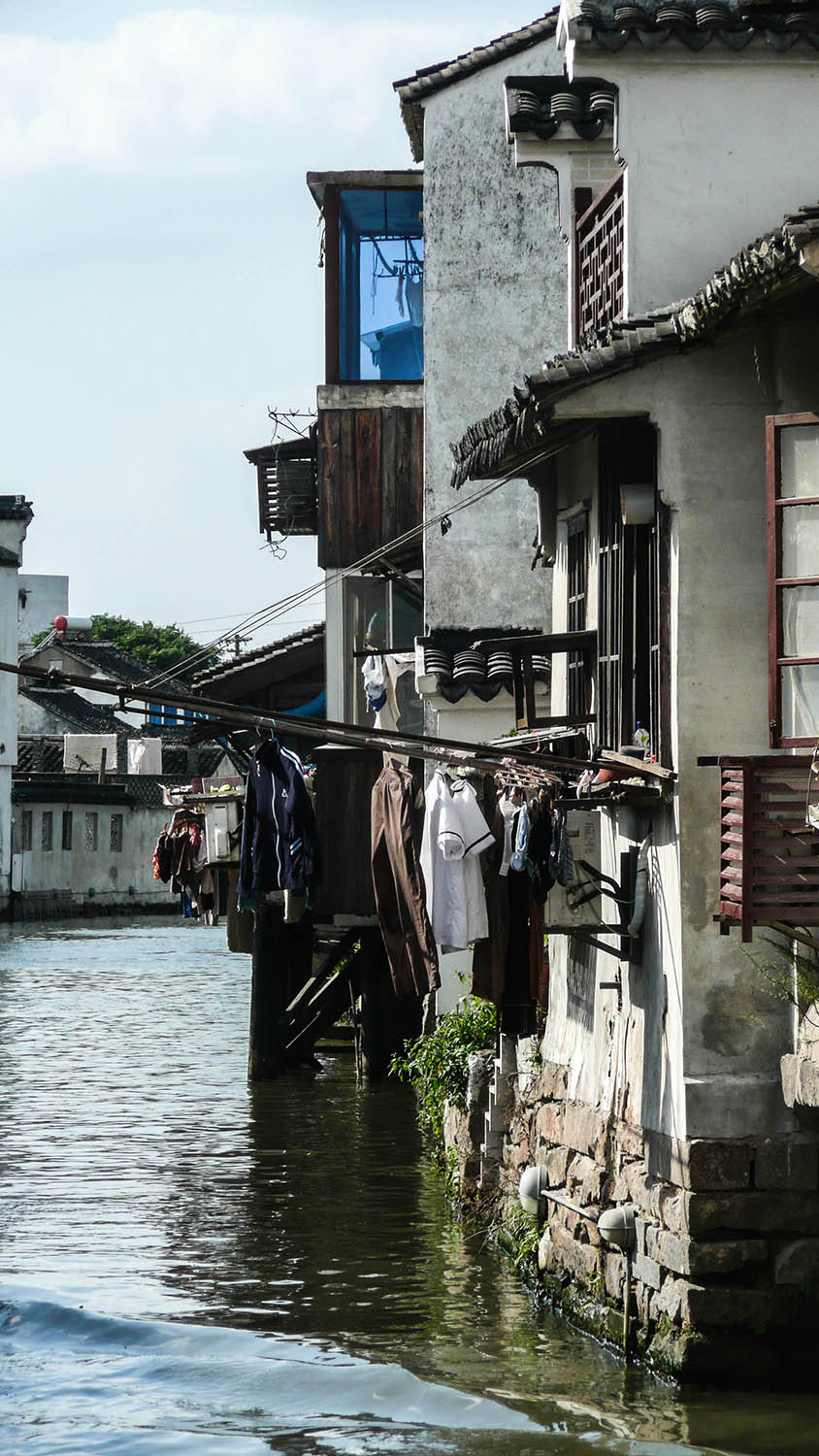
Suzhou is also home to the famous Classical Gardens of Suzhou, a UNESCO World Heritage Site. These gardens, some dating back to the 11th century, are masterpieces of Chinese landscape design. While I didn’t visit them all, their reputation for intricate pathways, water features, and pavilions make them a must for anyone drawn to serene, meticulously planned beauty.
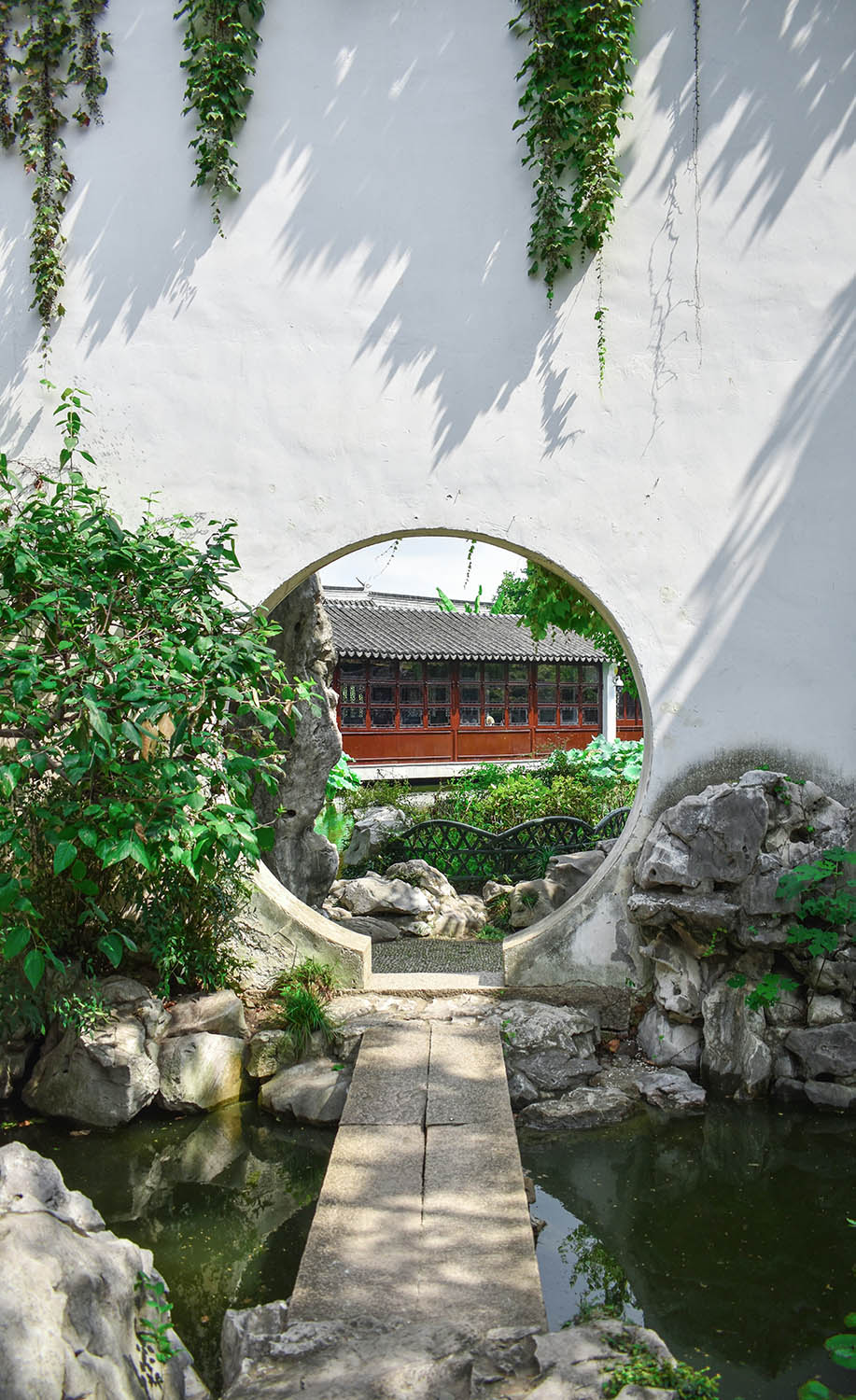
In the Classical Gardens, I had the privilege of experiencing something unforgettable. As evening fell, the tranquil atmosphere was transformed by the soft, melodic tones of a pipa performance.
Dressed in traditional silk attire, the musician sat in serene focus, her painted face evoking an image from a bygone era. Her fingers danced over the pear-shaped instrument, filling the air with tremolos and gentle portamenti. Set against the manicured beauty of the gardens, the performance felt like a bridge between the elegance of Suzhou’s history and its living culture.
The Humble Administrator’s Garden and Lingering Garden are two of the most famous and are often recommended for first-time visitors.
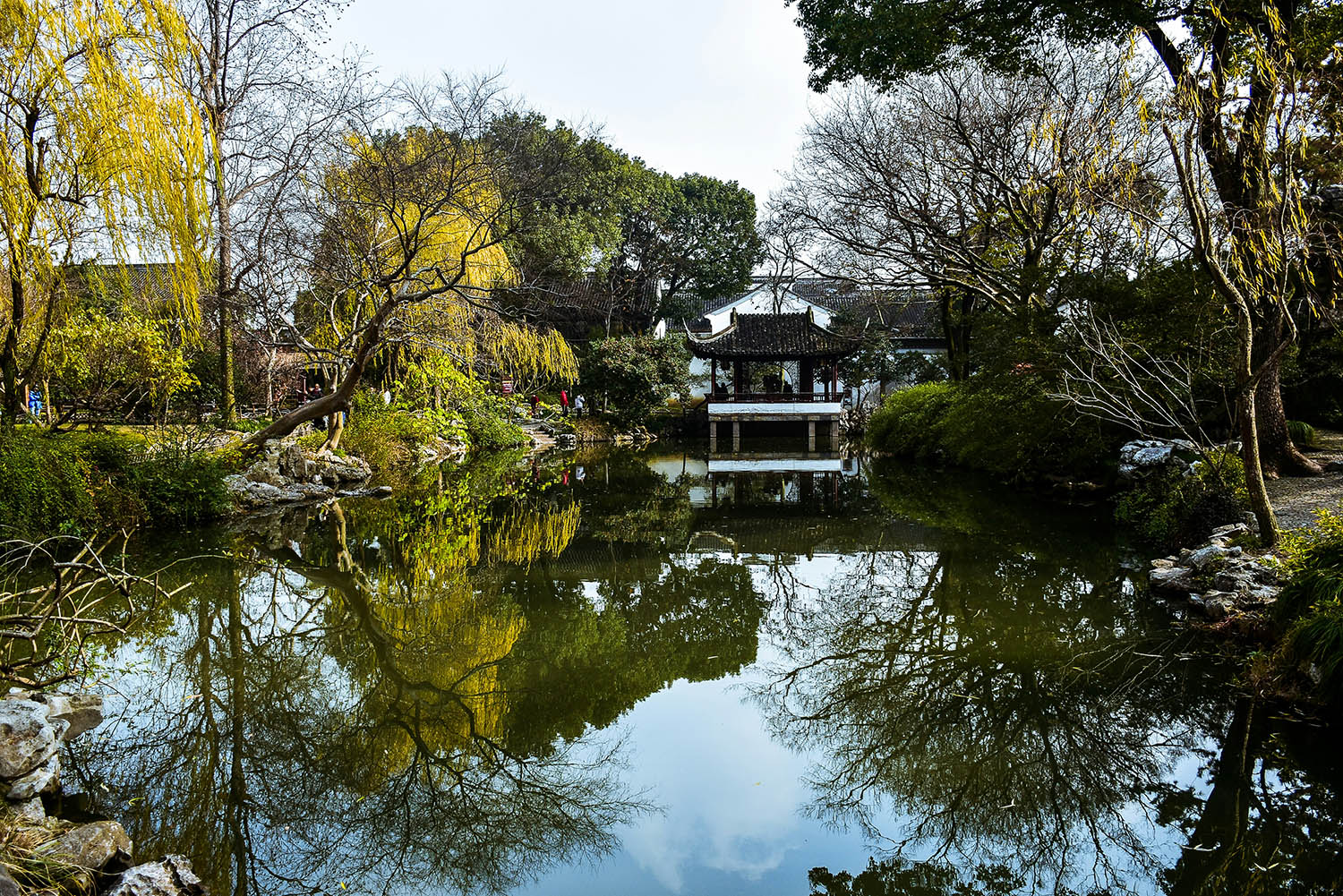
Food was another highlight of my time in Suzhou. At Yangyang Dumpling Restaurant, I discovered dumplings that were as much an experience as they were a meal. After the crunch of fried crickets in Beijing, the soft bite of these savoury, soup-filled parcels felt like a small luxury.
For those exploring more of Suzhou’s culinary offerings, the street markets are a great place to try local specialties like sweet osmanthus cakes and pan-fried buns.
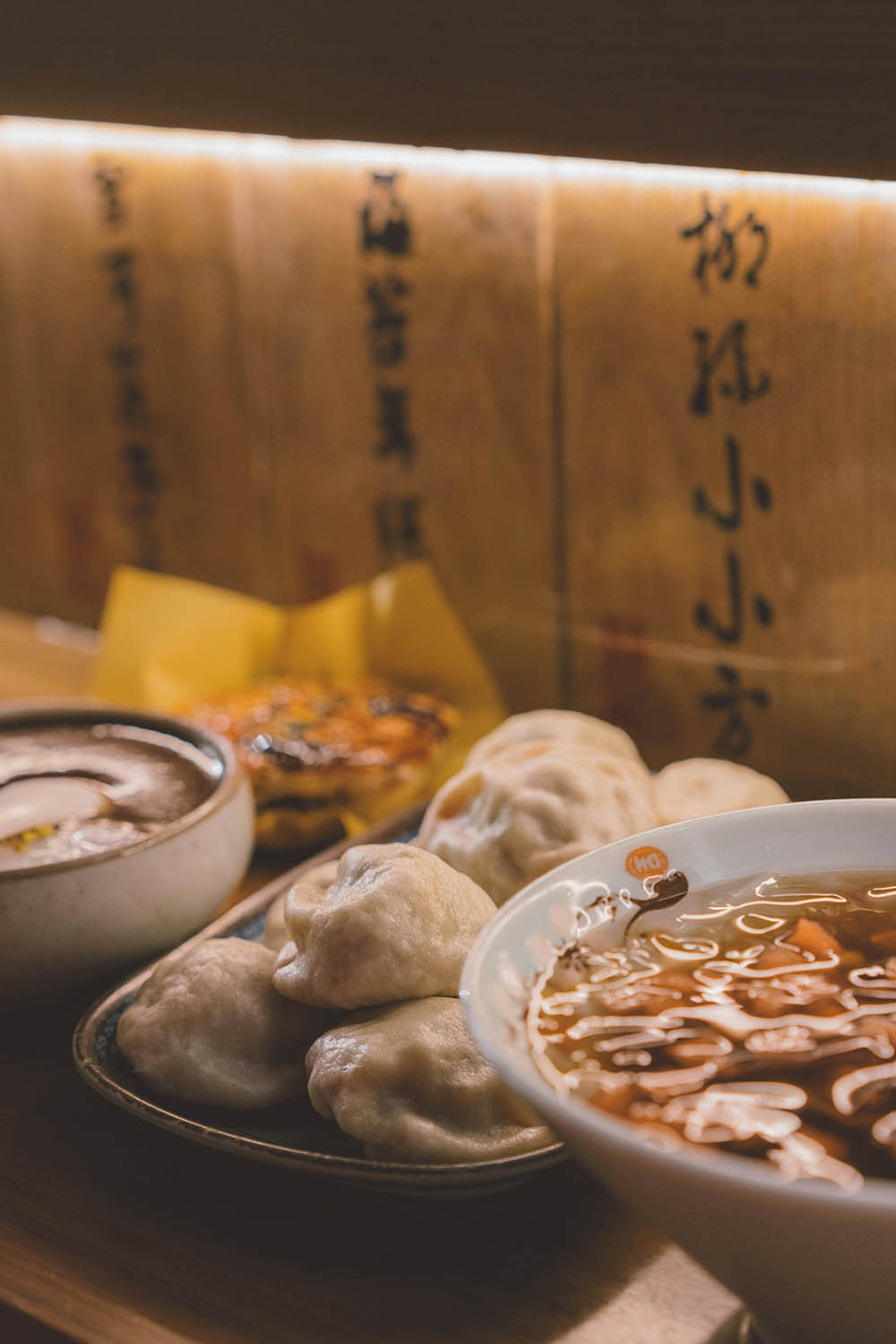
For a quieter, more cultural experience, the Suzhou Museum and Pingjiang Road are often recommended. The museum, designed by renowned architect I.M. Pei, blends modern architecture with Suzhou’s classical style. Pingjiang Road, on the other hand, is a historic street lined with tea houses, shops, and canals, offering a slower pace for those who want to explore on foot.
Whether you’re floating along its waterways or exploring its ancient gardens, Suzhou’s uniqueness lies in its ability to balance beauty with authenticity.
Accommodation – Staying in Suzhou
Suzhou offers a variety of accommodation options, from luxury hotels overlooking classical gardens to charming guesthouses nestled in the historic canalside districts.
Budget: Suzhou Desti Youth Park Hostel
Suzhou Desti Youth Park Hostel is a budget-friendly option offering air-conditioned rooms, free WiFi, and a lively bar, conveniently located near The Lingering Garden and Shantang Street. Enjoy a game of billiards and benefit from a 24-hour front desk with English and Chinese-speaking staff to assist with travel plans.
With its central location and high ratings from solo travellers, this hostel is an excellent choice for exploring Suzhou on a budget.
Mid-Range: Cendre Hotel (Lingering Garden and Tiger Hill)
Cendre Hotel offers a comfortable mid-range stay in Suzhou, featuring air-conditioned rooms, a fitness centre, and a serene garden. Conveniently located near The Lingering Garden and Tiger Hill, the hotel includes amenities such as free WiFi, a restaurant, and a 24-hour front desk that provides tour arrangements.
With its buffet or Asian breakfast options and modern, well-equipped rooms, Cendre Hotel is a great choice for travellers seeking convenience in Suzhou.
➡ Click here to book Cendre Hotel (Lingering Garden and Tiger Hill)
High End: Hotel Indigo Suzhou Grand Canal
Experience five-star luxury at Hotel Indigo Suzhou Grand Canal, located in the Hu Qiu District, offering a stylish retreat near top attractions like Hanshan Temple and The Lingering Garden. This high-end hotel features modern, non-smoking rooms, a fitness centre, an indoor pool, and an on-site restaurant and bar.
Enjoy premium amenities such as concierge services, 24-hour front desk assistance, and a buffet breakfast, making it an ideal choice for a sophisticated and comfortable stay in Suzhou.
Food – Eating in Suzhou
Suzhou’s cuisine reflects the subtleties of Jiangsu Province, emphasising delicate flavours, seasonal ingredients, and intricate preparation. Known as Suzhou-style cuisine, it’s a balance of sweet and savoury, often leaning toward milder tastes compared to other regions in China.
One specialty you shouldn’t miss is squirrel-shaped mandarin fish (松鼠桂鱼), a Suzhou classic. This dish features a whole fish scored and fried until golden, with a tangy-sweet sauce poured over it. The result is both visually stunning and delicious, with crispy edges and tender, flaky meat.
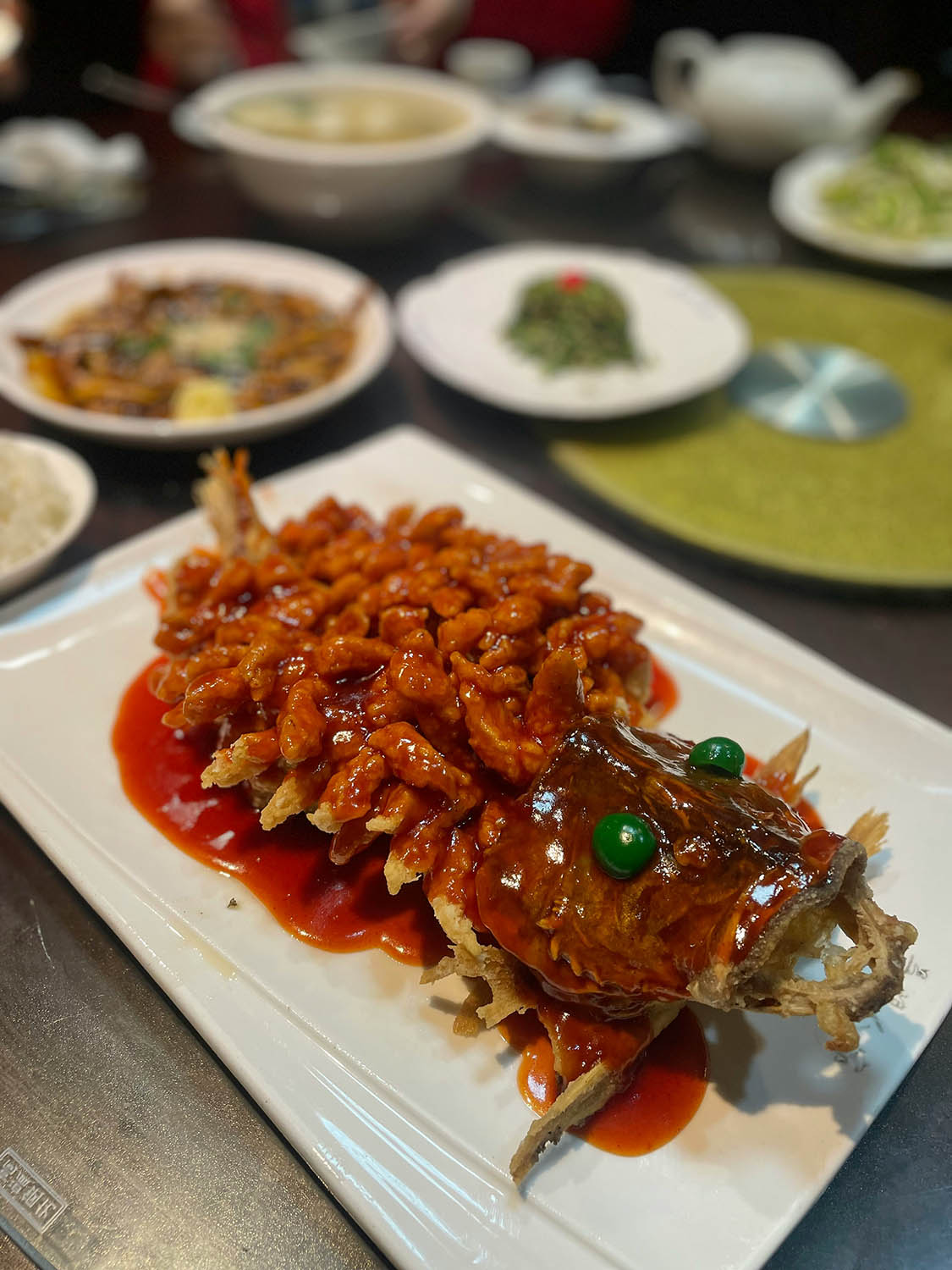
For something lighter, Suzhou-style mooncakes filled with sweet red bean paste or savoury pork are popular treats, especially during the Mid-Autumn Festival.
Street food lovers will find plenty to enjoy at local markets, including osmanthus cakes, fragrant with the floral scent of the region’s famous flower, and pan-fried buns, which burst with rich, savoury fillings.
Suzhou’s food is an expression of the city’s elegance and tradition.
Transportation – Getting around Suzhou
Navigating Suzhou is straightforward, with various options to suit your travel style.
➡ On Foot
Suzhou’s compact historic areas, such as Pingjiang Road and the Classical Gardens, are best explored on foot. Walking allowed me to soak in the slower pace of life.
➡ By Bicycle
Biking is another excellent way to explore Suzhou, especially around the quieter outskirts or parks. Bike-sharing apps like Mobike are widely available, making it easy to rent a bike for short distances. Keep to designated bike lanes where possible for a safer ride.
➡ By Public Bus
Suzhou has an extensive bus network connecting most tourist spots, and fares are typically low. While buses are budget-friendly, English signage or announcements are limited, so having a translation app or knowing your route beforehand is helpful.
➡ By Taxi or Ride-Hailing Apps
Taxis are widely available and relatively inexpensive in Suzhou. Ensure you have your destination written in Chinese characters for clarity. For added convenience, use ride-hailing apps like Didi, which are reliable and often easier to book than flagging a cab.
➡ By Boat
One of the most charming ways to get around Suzhou is by boat. Canal tours provide a scenic way to navigate the city, offering a unique perspective of its waterways and traditional architecture. While these are more for sightseeing than practical transport, they’re worth experiencing at least once.
Transportation – Getting to Suzhou
Suzhou is well-connected to major cities in China, making it an easy addition to any itinerary.
➡ By Train
I, with the group, arrived in Suzhou by high-speed train from Xi’an, a journey that took approximately 5.5 hours.
Suzhou has two main train stations: Suzhou Railway Station, located near the city centre, and Suzhou North Railway Station, which serves primarily high-speed trains. Trains from Shanghai, just 30 minutes away, make Suzhou an ideal day trip or short stopover.
➡ By Bus
Long-distance buses connect Suzhou with nearby cities, such as Hangzhou and Nanjing. While buses are less popular than trains, they are an economical option for short distances and for reaching areas not served by the rail network.
➡ By Car
Driving to Suzhou from Shanghai or other nearby cities is straightforward, with well-maintained highways connecting the region. However, traffic within Suzhou’s city centre and parking near popular attractions can be challenging, making public transportation or trains more convenient options.
SHANGHAI (上海)(Days 8-10)
Arriving in Shanghai felt like stepping into the future. The city rose around me in a cascade of shimmering skyscrapers, each more dramatic than the last, their reflections rippling across the Huangpu River. Yet, beneath its ultra-modern skyline, Shanghai revealed layers of history and culture that gave it a richness I hadn’t anticipated.
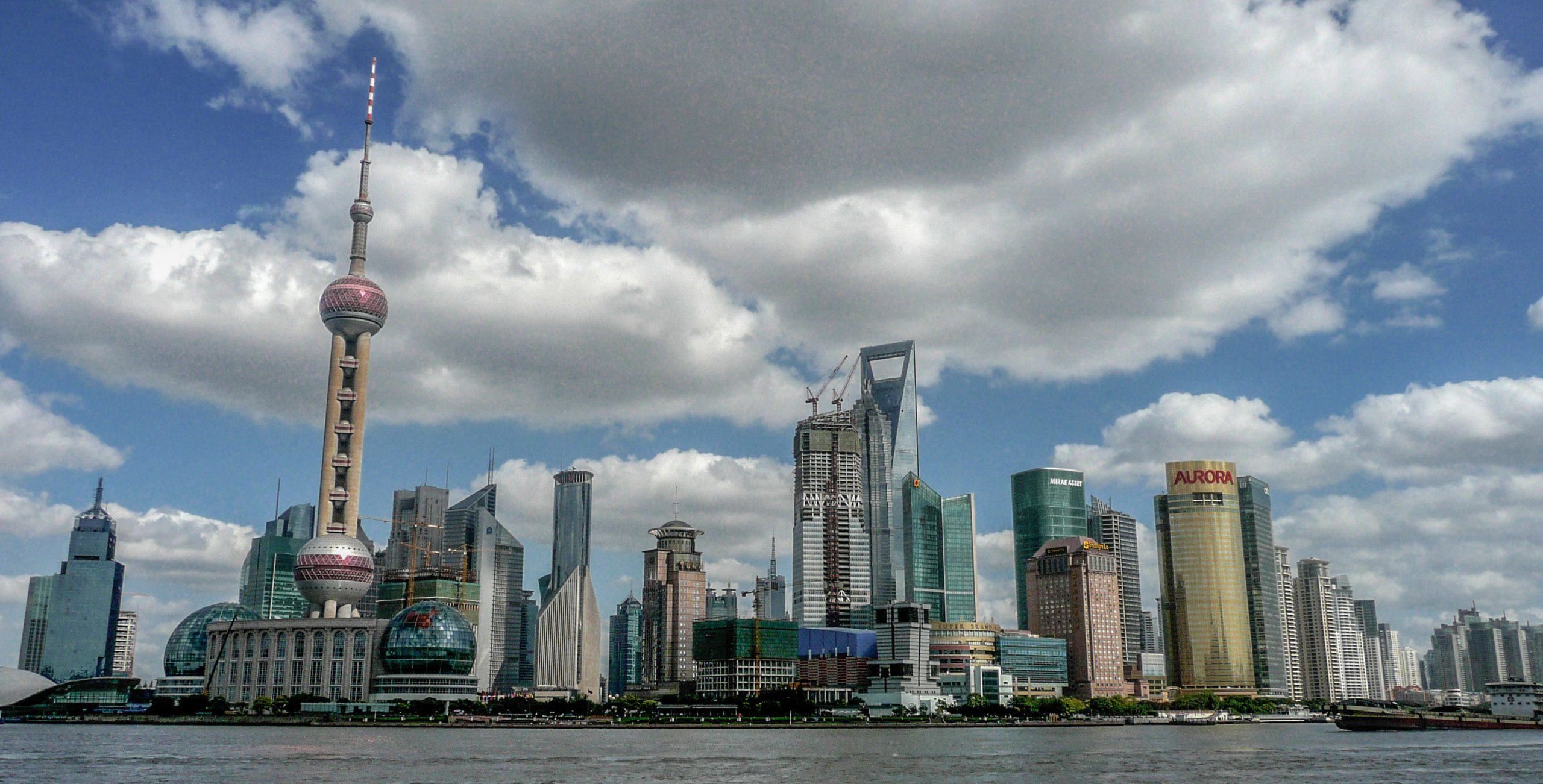
The energy here was unlike anywhere else in China — intense, restless, and unapologetically ambitious. Walking along the Bund, where the colonial past meets the neon glow of Pudong’s towers, I felt caught between two worlds. Shanghai seemed determined to show me everything at once: its artistry, its indulgence, and its relentless drive forward.
This was a city of extremes, where tradition and innovation danced together in balance. I couldn’t wait to see what else it had to offer.
Things to Do and Experience in Shanghai
Shanghai is a city that refuses to be pinned down. It’s fast and futuristic, but tradition still lingers in its gardens and alleyways. Over three days, I experienced Shanghai’s relentless energy.
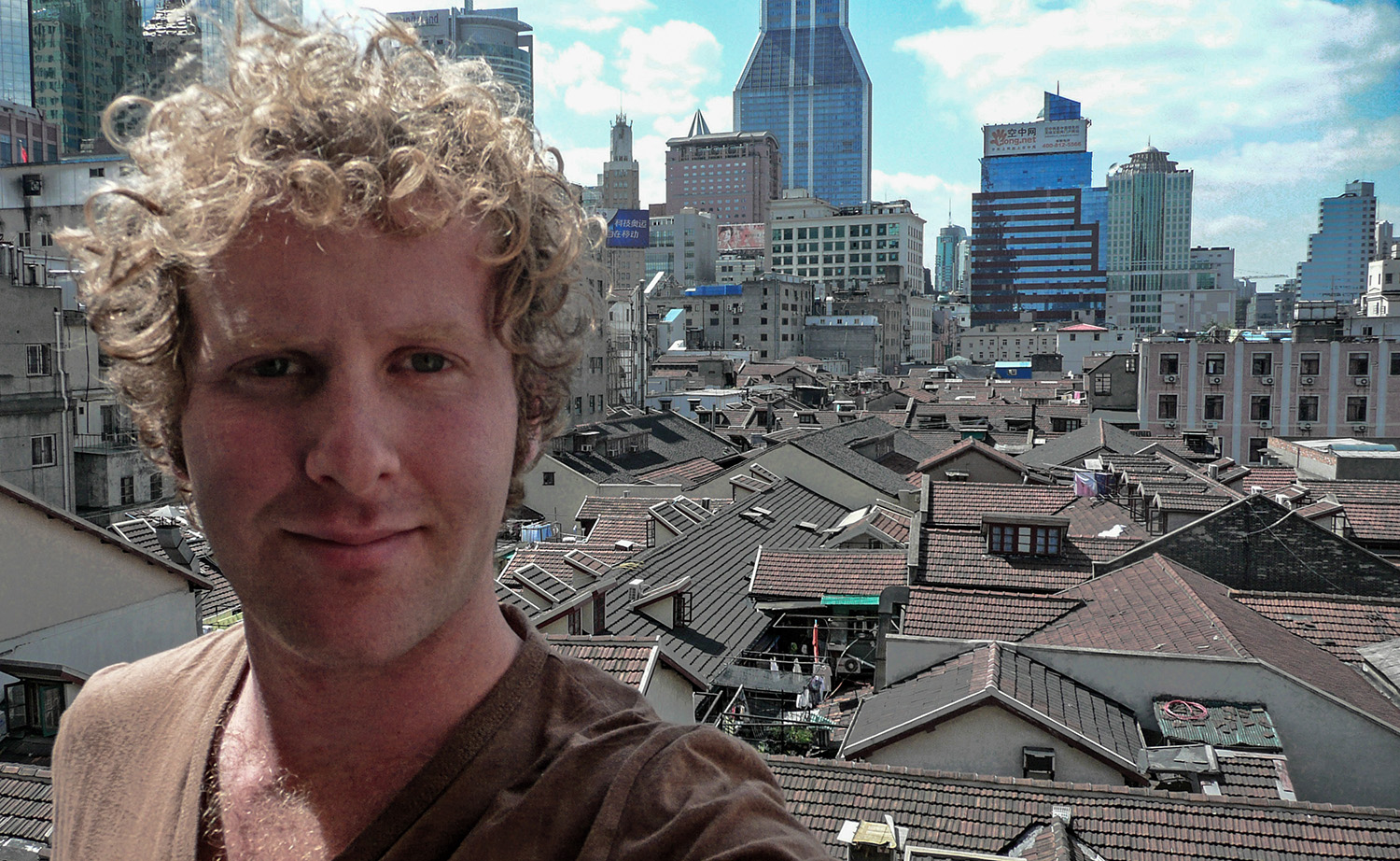
Walking along The Bund, I felt Shanghai’s history and ambition collide. On one side stood the colonial-era buildings, solid and stoic, a reminder of the city’s past as a global trading hub. On the other, the glittering skyline of Pudong stretched into the heavens, a futuristic vision of China’s potential.
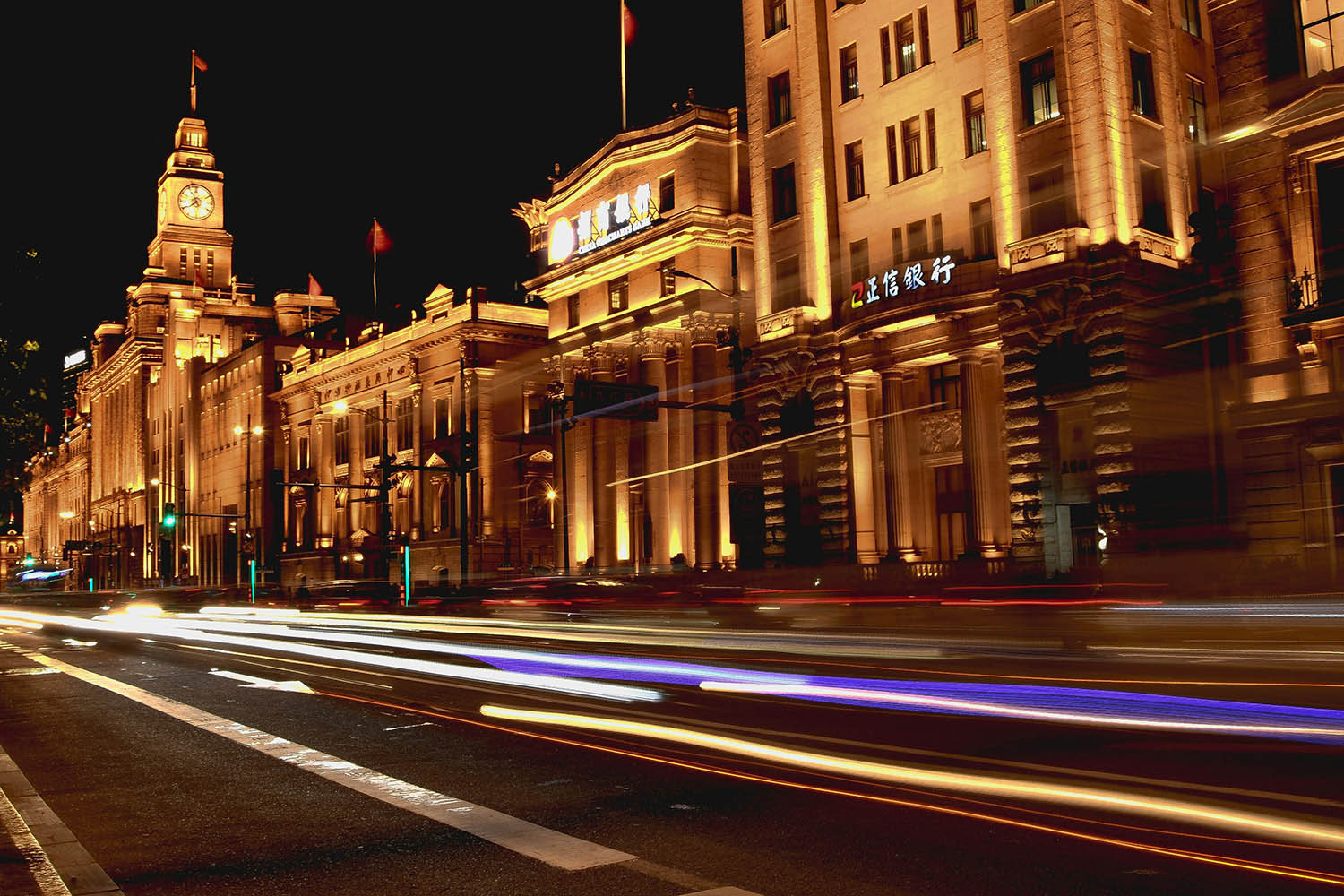
At night, the view transforms entirely, as neon lights reflect off the Huangpu River. For a more immersive experience, a Huangpu River cruise offers an unparalleled perspective on both the historic and modern sides of Shanghai.
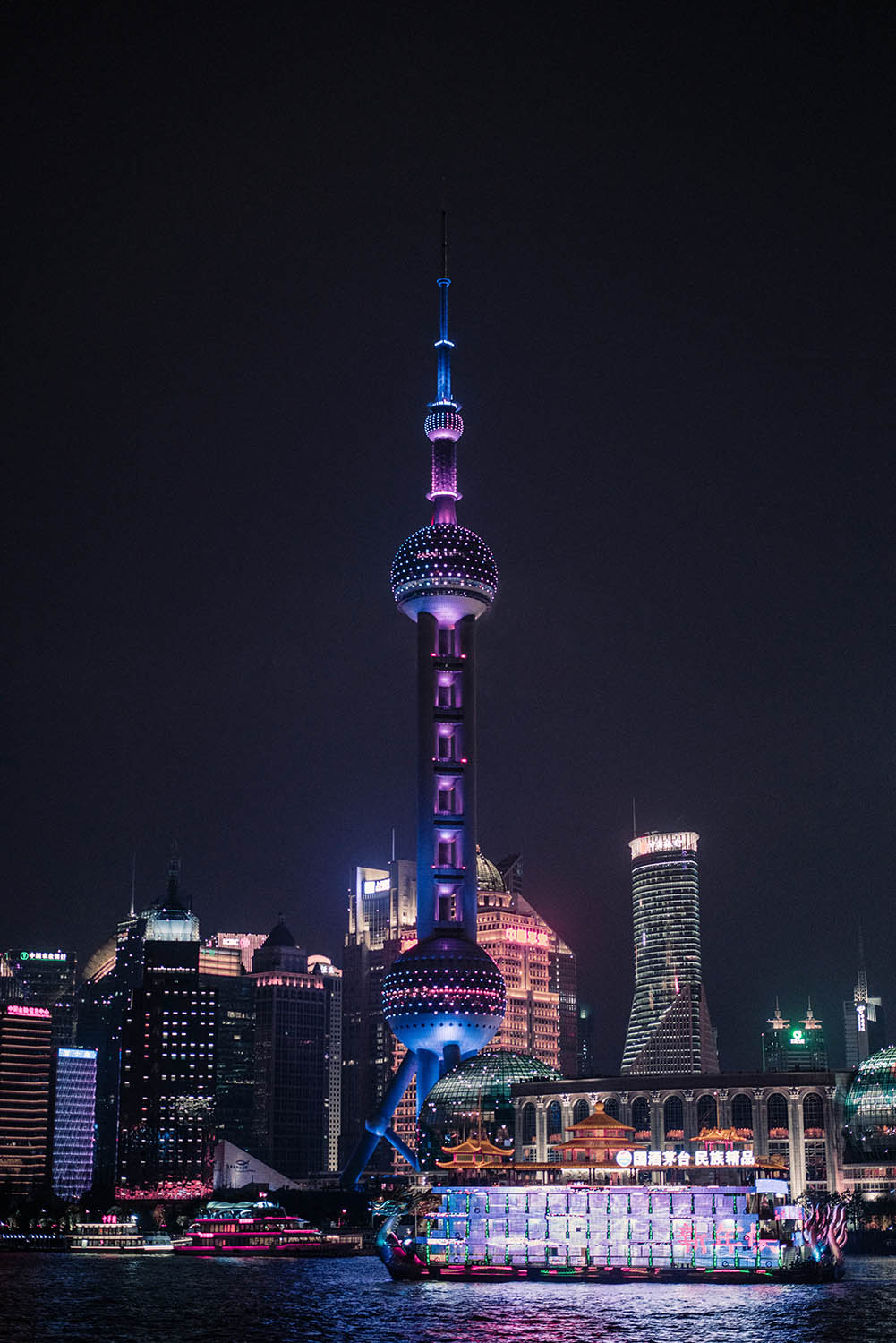
The city’s energy soared even higher when I visited the Oriental Pearl Tower. While its striking architecture draws most visitors, the views from the observation deck left a bigger impression on me.
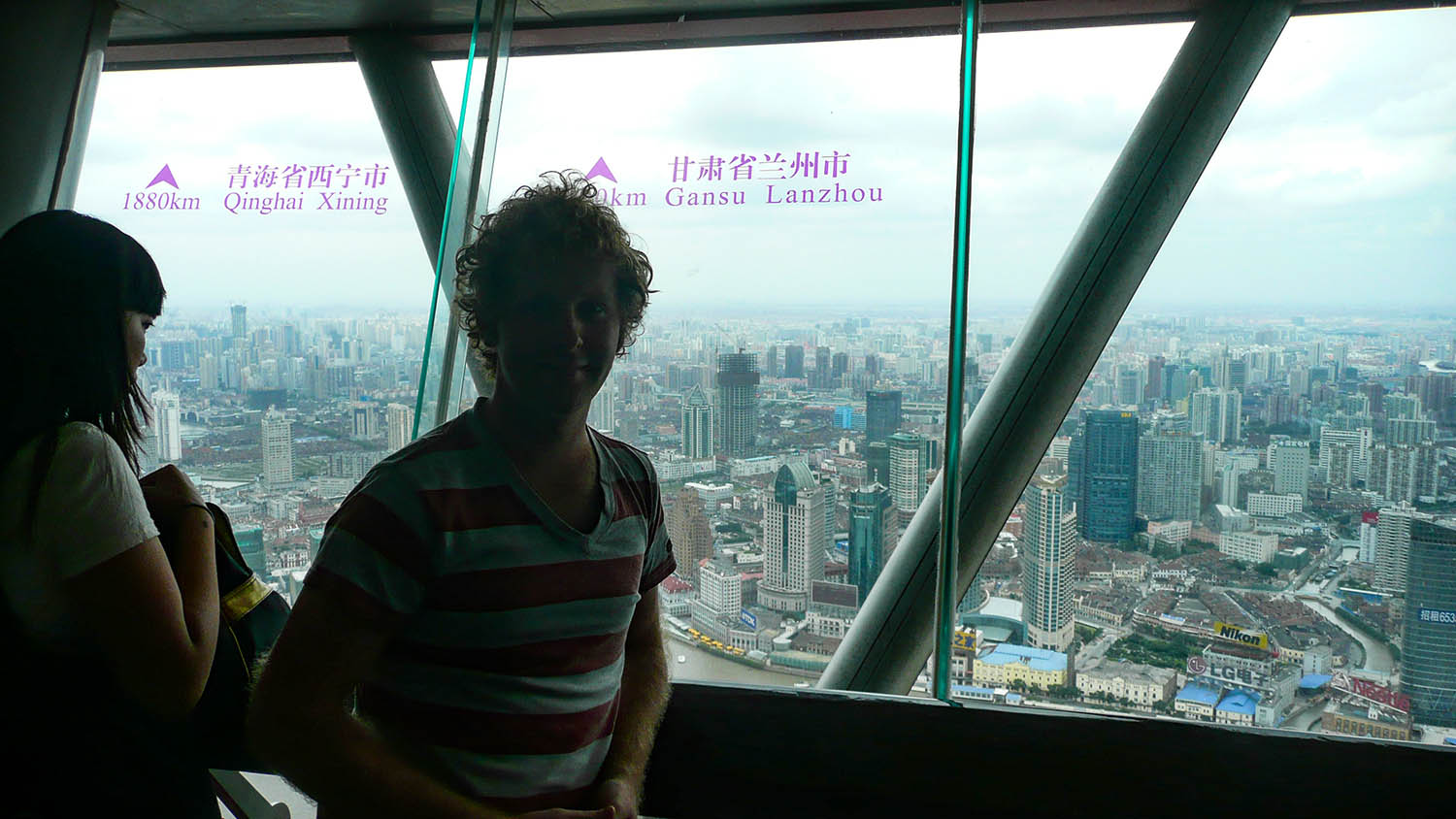
Across the river, the Shanghai Tower offers an even loftier perspective as the tallest building in China. Booking tickets ahead of time is essential, especially at sunset when the city is bathed in golden light, fading into a sea of shimmering neon.

Amid all this modernity, the Yuyuan Garden felt like stepping back in time. This meticulously designed retreat, dating back to the Ming dynasty, is an intricate maze of stone pathways, koi-filled ponds, and elegant pavilions. Early mornings are the best time to visit, before the crowds arrive, allowing you to soak in the serenity.
Outside the garden, the bustling Yuyuan Bazaar offers delicious street food, including soup dumplings that are practically a rite of passage for visitors.

One of my most memorable evenings in Shanghai was spent at the Shanghai Centre Theatre, where an acrobatics show left me in awe. Watching performers defy gravity — diving through flaming hoops, contorting atop bicycles, and building human towers — was a jaw-dropping reminder of the artistry and discipline rooted in Chinese culture. Tickets sell out quickly, so it’s worth booking ahead.

For art enthusiasts, the Shanghai Museum provides a window into China’s rich history through its exquisite collections of jade, ceramics, and calligraphy. Meanwhile, the M50 Art District offers a glimpse into Shanghai’s vibrant contemporary art scene, with repurposed industrial spaces housing cutting-edge galleries.
A short trip south of Shanghai took me to Zhouzhuang, often called China’s Little Venice.

This picturesque water town is a labyrinth of canals, stone bridges, and ancient houses that transport you to a simpler time. Wandering through its narrow streets and gliding along the waterways in a traditional gondola was a tranquil escape from Shanghai’s high-energy pace.
Accommodation – Staying in Shanghai
Shanghai offers a mix of luxury hotels in Pudong, trendy boutique stays in the French Concession, and budget hostels near the Bund, catering to every type of traveller.
Budget: Dayin International Youth Hostel - People's Square & Old Town
Dayin International Youth Hostel offers budget-friendly accommodation in a central location, with modern amenities like free WiFi, a fitness centre, and a shared lounge. Enjoy air-conditioned rooms with private bathrooms, access to a restaurant and bar, and services including a 24-hour front desk and currency exchange.
Conveniently located near Shanghai Railway Station and Jade Buddha Temple, this hostel is an excellent choice for travellers seeking affordable comfort in the heart of Shanghai.
➡ Click here to book Dayin International Youth Hostel - People's Square & Old Town
Mid-Range: Shanghai Fish Inn People Square
Shanghai Fish Inn People Square provides a comfortable mid-range stay in the heart of the city, less than 1 km from the bustling People's Square. The air-conditioned rooms feature modern amenities like flat-screen TVs, private bathrooms with complimentary toiletries, and free WiFi, all with views of the city.
Conveniently located near East Nanjing Road, Yu Garden, and Jing'an Temple, this hotel is an excellent base for exploring Shanghai’s top attractions while enjoying a relaxed and welcoming atmosphere.
High End: The Langham, Shanghai, Xintiandi
Discover luxury at The Langham, Shanghai, Xintiandi, a five-star retreat in the heart of Shanghai’s lifestyle hub. Steps from South Huangpi Road Subway Station, this hotel features opulent rooms with floor-to-ceiling city views, twin-vanity bathrooms, and modern amenities.
Indulge in gourmet dining at the Michelin-starred Tang Court, relax in the Chuan Spa and indoor pool, or enjoy afternoon tea in the elegant lobby lounge. With its prime location near Huaihai Road and the Bund, The Langham offers unparalleled sophistication and convenience for discerning travellers.
Food – Eating in Shanghai
Shanghai’s food scene is a feast of flavours, reflecting both its coastal location and its cosmopolitan identity.
One must-try dish is xiaolongbao, the famous soup dumplings filled with rich broth and tender pork or crab. You’ll find them in both high-end restaurants and bustling street stalls, but places like Jia Jia Tang Bao are renowned for their expertly crafted dumplings. Watching locals expertly nibble the top of the dumpling, slurp the hot broth, and savour the filling is as much a part of the experience as the taste itself.
Seafood lovers should try Shanghai hairy crab, especially if visiting in autumn when it’s in season. The crab, prized for its rich roe and sweet meat, is typically steamed and served with a tangy vinegar dipping sauce.
For something lighter, shēng jiān bāo, pan-fried buns with a crispy bottom and juicy pork filling, are a local favourite often found at breakfast stalls.
Whether you’re navigating the night markets or dining in a classic Shanghainese restaurant, the food here captures the city's blend of tradition and modernity.
Transportation – Getting around Shanghai
Navigating Shanghai is straightforward with its mix of modern and traditional transport options.
➡ On Foot
Exploring Shanghai on foot is one of the best ways to soak in its charm. Areas like The Bund, Yuyuan Garden, and the French Concession are perfect for walking, offering plenty to discover.
While Shanghai’s size can make walking between districts impractical, strolling within neighbourhoods is both enjoyable and rewarding.
➡ By Bicycle
Bike-sharing services such as Mobike and Hellobike are popular in Shanghai. You can rent a bike through an app and explore the city’s quieter streets and parks, especially in areas like the French Concession. Cycling is a great way to cover medium distances while enjoying the city at your own pace.
➡ By Metro
The Shanghai Metro is fast, reliable, and covers nearly all major attractions, making it the go-to option for most travellers. With 20 lines and English signage, the metro is tourist-friendly and affordable, with distance-based fares starting at ¥3 (for 6 kilometres).
Purchase a Shanghai Public Transport Card to make transfers and trips hassle-free. During rush hours, trains can get crowded, so plan accordingly.
➡ By Bus
Shanghai’s extensive bus network is an affordable option for getting around, with fares starting at ¥2. However, buses can be difficult for non-Mandarin speakers, as most stops and announcements are only in Chinese. Apps like Baidu Maps can help you navigate routes if you’re comfortable with the language barrier (there's no English version, sorry).
➡ By Taxi or Ride-Hailing Apps
Taxis are widely available, but communication can be a challenge if you don’t speak Mandarin. Having your destination written in Chinese characters is essential.
Alternatively, ride-hailing apps like Didi are more convenient and allow for easier communication, as you can input your destination directly into the app.
Taxi fares start at ¥14.
➡ By Ferry
The Huangpu River Ferry is a scenic and inexpensive way to cross the river between The Bund and Pudong. Tickets cost just ¥2 for pedestrians, and the ride offers stunning views of Shanghai’s iconic skyline, making it both practical and enjoyable for visitors.
Transportation – Getting to Shanghai
Shanghai is one of the most accessible cities in China, with multiple transportation options to suit travellers coming from near or far.
➡ By Air
Shanghai is home to two major airports: Shanghai Pudong International Airport (PVG), serving primarily international flights, and Shanghai Hongqiao International Airport (SHA), which handles many domestic flights.
Pudong Airport is approximately 30 kilometres from the city centre, with the high-speed Maglev train and airport shuttles providing quick access. Hongqiao Airport is closer to downtown and conveniently linked to the metro and train network.
➡ By Train
The group and I arrived in Shanghai from Suzhou via high-speed train, a journey that took just under 30 minutes. With frequent departures from Suzhou Railway Station to Shanghai Hongqiao or Shanghai Railway Station, it was a seamless and efficient way to travel.
Shanghai’s high-speed rail network connects to most major cities in China, including Beijing (4.5–6 hours) and Xi’an (6–7 hours). Booking tickets in advance is highly recommended during peak travel seasons.
➡ By Bus
Long-distance buses connect Shanghai to nearby cities like Hangzhou and Nanjing. While buses are an economical choice, trains are typically faster and more comfortable. Major bus terminals include Shanghai South Long-Distance Bus Station and Shanghai General Bus Station.
➡ By Car
Driving to Shanghai is an option for those travelling from nearby regions, with well-maintained highways connecting the city. However, traffic within Shanghai can be challenging, and parking is often limited, making public transportation the better choice once you’re in the city.
Other Destinations To Visit In China
China’s vastness is reflected in its incredible diversity of destinations, each offering a unique glimpse into the country’s history, culture, and natural beauty. While a 10-day trip like mine limits how much you can cover, there are plenty of other cities and regions worth exploring if you have more time or plan a future visit.
On a different trip, I visited Shenzhen, a modern metropolis known for its tech industry and rapid urbanisation. Its bustling malls, theme parks, and proximity to Hong Kong make it an intriguing stop for those fascinated by China’s economic rise.
I also explored Chengdu, the gateway to Sichuan Province and home to the famous giant pandas. Chengdu’s laid-back vibe, spicy hot pot, and teahouse culture contrast sharply with the fast-paced cities of the east.
I’ve also spent time in Qingdao and Huangdao, coastal cities known for their breezy feel and German colonial history. Qingdao, famous for its Tsingtao Brewery and sea views, offers a unique blend of old-world charm and seaside appeal.
Nearby Huangdao, quieter and less touristy, makes for an escape with its beaches and relaxed pace of life.
Other highlights in China include Guilin, with its karst mountain landscapes; Hangzhou, famous for its West Lake; and Zhangjiajie, known for its sandstone pillars that inspired the landscapes in Avatar.
For history enthusiasts, Luoyang offers ancient temples and grottoes, while Harbin in the far north transforms into a winter wonderland with its annual ice festival.
China’s size and variety mean there’s always more to discover. 10 days only scratches the surface.
Essential Travel Tips for Your China Itinerary
Navigate your journey with greater ease by following these practical tips for travelling in China.
How to Get to China
China is well-connected to the rest of the world, with various transportation options depending on your starting point and travel preferences.
➡ By Air
Flying is the most convenient way to reach China, with major cities like Beijing, Shanghai, Guangzhou, and Chengdu served by international airports. Beijing Capital International Airport (PEK) and Shanghai Pudong International Airport (PVG) are the busiest hubs, connecting to cities worldwide.
Direct flights are available from most continents, and booking early can help secure better deals. Tickets can be expensive. It's the second-most populous country in the world, so there is a lot of movement and competition for seats.
The key Chinese carriers include:
➡ By Train
For those travelling from neighbouring countries, international train routes are an option. The Trans-Mongolian Railway connects Beijing with Ulaanbaatar and Moscow, offering a scenic journey through Russia and Mongolia. Trains from Hanoi to Nanning and from Hong Kong to Guangzhou also provide easy cross-border travel.
Here are a few of the rail connections that exist:
- North Korea - there are regular connections between Pyongyang and Beijing
- Vietnam - via the Friendship Pass, you can travel between Hanoi in Vietnam and Nanning in China
- Hong Kong - there are links between Hong Kong (namely Hung Hom) and Guangzhou East
- Central Asia - there is a connection between Almaty in Kazakhstan to Urumqi in Xinjang, China.
- Russia (and Europe) - thanks to the beautiful and iconic Trans-Siberian Railway, you can travel all the way from Europe, through Russia, Siberia and Mongolia to Beijing in China.
➡ By Bus and Car
There are 14 international land borders that China shares with other countries. Some are remote and difficult to reach, but they are also the ones that reward travellers the most, with stunning, panoramic views.
Here are some of the possibilities of travel to China from surrounding nations:
- Afghanistan - At present, it is not possible to cross this border by land due to security concerns and lack of open crossings for travellers.
- Bhutan - Like Afghanistan, there are no functional land border crossings between Bhutan and China available to tourists.
- Macau - Two land border crossings connect Macau to mainland China: the Portas do Cerco and the Lotus Bridge. It’s best to secure your visa in advance, as visa-on-arrival options are limited.
- Hong Kong - Four major land border crossings connect Hong Kong to mainland China: Lok Ma Chau, Sha Tau Kok, Man Kam To, and Shenzhen Bay Port. Lok Ma Chau is one of the most commonly used. I personally used this crossing to visit a friend in Shenzhen while staying in Hong Kong, which, at the time, granted visas on arrival.
- North Korea - The main border crossing is Dandong (China)/Sinuiju (North Korea). Tourists need to ensure they have a valid visa and typically arrange travel through a guided tour. Other crossings at Tumen/Namyang and Quanhe/Wonjong occasionally open but are not reliably accessible to tourists.
- Russia - Border crossings include Manzhouli, Suifenhe, Dongning, and Fuyuan. Travellers must have visas for both countries before attempting to cross.
- Tajikistan - The Kulma Pass is the only border crossing open to foreigners. It operates from May to November on weekdays only. Other border points are restricted to use by Chinese and Tajik nationals.
- Kyrgyzstan - The Torugart Pass connects Kyrgyzstan to China but is open only in summer. A second crossing at Irkeshtam is more accessible, with sleeper buses running between Osh and Kashgar.
- Kazakhstan - The primary border crossing is at Khorgos, with bus connections between Almaty and Yining. Ensure your visa is arranged in advance.
- Mongolia - Two major crossings exist: Erenhot and Takashiken. Erenhot is the most commonly used for travellers heading into Inner Mongolia.
- Nepal - A road from Nepal to Tibet (part of China) exists, but accessing this route is currently only possible through a package tour. Tours can be arranged either in Nepal or abroad.
- Pakistan - The Karakoram Highway offers one of the most scenic border crossings into China. It is closed in winter, and travel is limited to summer. Friendly relations between the countries ensure a relatively smooth crossing process.
- Laos - Bus connections are available from Luang Namtha (Laos) to Boten, Mengla, and Kunming in China.
- Vietnam - There are three overland entries to China from Vietnam. They include: Dong Dang to Pingxiang; Lao Cai to Hekou; and Mong Cai to Dongxing.
- Myanmar - The primary crossing is between Lashio (Myanmar) and Ruili (China). Permits are required for this route, so joining a guided tour is often the most practical option.
- India - The Nathu La Pass between Sikkim and southern Tibet is a trade route and not open to tourists.
Ensure you have your visas in order before attempting to cross at any open land borders.
➡ By Ferry
While not a common choice, cruises and ferries connect China with nearby countries like South Korea and Japan. Ports like Shanghai and Tianjin occasionally serve international cruise ships, offering a unique way to arrive in China.
How to Get Around China
China’s vast size is matched by an efficient and varied transportation system, making it easy to travel between cities and regions.
➡ By Domestic Flight
For long distances, flying is the fastest option. China’s domestic airline network covers even remote areas, with frequent flights between major cities. However, be prepared for potential delays, especially in busy airports like Beijing or Guangzhou.
➡ By High-Speed Train
China’s high-speed rail network is one of the most advanced in the world, connecting major cities with trains that reach speeds of up to 350 km/h. Routes like Beijing to Shanghai and Xi’an to Chengdu are popular for their speed and comfort. Tickets can be booked online or at train stations, but booking early is recommended, especially during holidays.
➡ By Bus
Long-distance buses are a budget-friendly way to reach smaller cities or rural areas. While less comfortable than trains or flights, they often serve destinations not accessible by rail.
➡ By Boat
For a more scenic journey, river cruises, such as those along the Yangtze River, offer a leisurely way to explore China’s waterways and iconic landscapes.
Types of Accommodation in China
China offers a wide variety of accommodation to suit all budgets and travel styles, making it easy to find a place that fits your needs wherever you go.
➡ Hotels
From luxury international chains to budget-friendly local hotels, there’s no shortage of options in China’s cities. High-end hotels, such as the Four Seasons in Beijing or the St. Regis in Shanghai, provide top-notch amenities, while mid-range hotels often offer comfortable rooms at affordable rates.
Note that some budget hotels may only accept Chinese nationals, so it’s worth checking in advance.
➡ Hostels and Guesthouses
For budget travellers, like me, hostels are a popular choice, particularly in cities with a strong backpacker presence like Xi’an or Chengdu. Hostels often include social spaces and organise tours, making them ideal for meeting fellow travellers.
Guesthouses and homestays in rural areas or smaller towns provide a more local experience, often run by friendly hosts.
➡ Traditional Stays
In historic areas like Pingyao or the water towns near Suzhou, you’ll find boutique hotels and inns housed in traditional Chinese buildings. These offer a chance to experience the charm of Chinese architecture and décor, with some accommodation options dating back centuries.
➡ Apartments and Rentals
Short-term rental platforms like Wimdu are available in major cities, offering more space and flexibility. These are especially useful for families or longer stays.
➡ Unique Options
For something different, consider staying in a yurt in Inner Mongolia, a guesthouse in the rice terraces of Guilin, or even aboard a boat for a Yangtze River cruise. China’s regional diversity extends to its accommodation, ensuring unique experiences wherever you go.
Currency and Spending in China
China’s official currency is the Renminbi (RMB), commonly referred to as the Yuan (¥). Cash is still widely accepted, but mobile payment systems such as Alipay and WeChat Pay are the primary methods for transactions among locals.
While these apps are becoming increasingly accessible for foreign visitors, having cash on hand is essential, especially in smaller towns or for street vendors.
Credit cards are accepted in high-end hotels, international chains, and upscale restaurants, but they’re not as widely used for everyday purchases. ATMs in major cities usually accept international cards, but it’s a good idea to notify your bank of your travel plans to avoid any issues.
Carry small denominations for taxis, local eateries, and entrance fees, as change may not always be readily available.
China remains a relatively affordable destination, with budget travellers able to get by on as little as ¥200–300 a day, while those seeking luxury experiences will find plenty of options to splurge.
Communicating in China
Language can be one of the more challenging aspects of travelling in China, as English is not widely spoken, especially outside major cities or tourist attractions. Although signage in English is common in airports, metros, and some public spaces, communication with locals often requires creativity, patience, or a good translation app. Google Translate and Pleco (in the App Store and on Google Play) are popular tools that can help bridge the gap.
Interestingly, in recent years, China has reduced the number of English teaching roles, potentially as part of a broader policy to emphasise self-reliance and promote Mandarin as a global language. This shift has also meant fewer opportunities to encounter English speakers, even in urban areas. In my subsequent solo trips, I relied on translation apps and written Chinese phrases, particularly for things like addresses and restaurant menus.
Learning a few basic Mandarin phrases before your trip can be invaluable. Polite expressions like “xièxiè” (thank you) and “nǐ hǎo” (hello) can go a long way in creating positive interactions with locals.
A physical phrasebook or downloading offline language resources can also come in handy in areas where mobile data isn’t reliable.
Communicating may require extra effort, but it’s often a rewarding part of the travel experience in China.
Cultural Nuances and Understanding
Travelling in China offers a chance to experience a rich culture, but certain behaviours and social norms may catch visitors off guard.
One of the more noticeable — and often uncomfortable — practices is public spitting. Sitting in Beijing West Railway Station, I distinctly remember the guttural sound of someone hocking deep in their throat, followed by a grotesque wad of sputum landing unapologetically on the concrete floor nearby. While undeniably unappetising, this behaviour is rooted in Chinese medicine, where expelling mucous is believed to rid the body of toxins.
Despite its cultural context, it can be off-putting for foreigners, and travellers will likely encounter it in public spaces.
Another aspect of Chinese social interaction that may feel jarring is the seeming lack of personal space and what can come across as pushy or robotic behaviour in crowded environments. Whether it’s being elbowed in a line or a cashier’s mechanical tone, these behaviours are less about rudeness and more about efficiency in a densely populated society. Understanding that this is often a reflection of cultural differences, rather than personal intent, can help temper frustration and foster tolerance during your travels.
As with any destination, adapting to local norms is part of the journey. Approaching these cultural nuances with curiosity rather than judgment can lead to a deeper appreciation of the complexities of life in China.
Dangers and Annoyances of Visiting China
Travelling in China is generally safe, but like any destination, there are a few pitfalls that travellers should be aware of.
One memorable experience I had involved a seemingly genuine couple near Tiananmen Square, who struck up a friendly conversation in simple English. Their warmth and curiosity seemed authentic, and I followed them to a nearby tea ceremony they invited me to.

However, after sipping several cups of tea in a dimly-lit room, the pleasant experience turned sour when a man demanded an exorbitant fee of US$50. Refusing to pay the full amount, I left behind ¥100 (roughly AU$20) and exited, disillusioned.
This incident serves as a reminder: always approach unsolicited offers with caution, as scams like overpriced tea ceremonies are not uncommon in tourist-heavy areas.
Another annoyance travellers may encounter is persistent bargaining or upselling in markets and tourist shops. While negotiating prices is expected in many places, some vendors can be relentless, making the experience uncomfortable for those unfamiliar with the practice.
Additionally, counterfeit goods are prevalent, so if something seems too good to be true, it likely is.
Overall, being cautious, trusting your instincts, and staying aware of your surroundings can help you avoid these annoyances and make your visit to China a more enjoyable experience.
Travelling Solo in China
Travelling solo in China on my subsequent trips was both challenging and rewarding. It pushed me to navigate a culture and language vastly different from my own, compelling me to rely on skills I hadn’t fully tapped into before — like decoding unfamiliar scripts, negotiating with street vendors using translation apps, and deciphering train schedules that felt like puzzles.

While major cities like Beijing, Xi’an, and Shanghai offered enough tourist-friendly amenities to ease the journey, the lack of widely spoken English often left me reliant on translation apps, gestures, and sometimes just sheer determination.
Safety was rarely a concern, and I found the people to be curious. However, scams targeting tourists — like the overpriced tea ceremony I fell for — serve as a reminder to stay alert and trust your instincts.
Adjusting to cultural nuances, such as crowded public spaces and different concepts of personal space, took patience, but it ultimately deepened my understanding of the nuances that make China, China.
For me, solo travel in China was about more than just ticking off landmarks; it was a chance to engage with the country on its terms, embracing the challenges and the moments of connection that came with navigating its vast and varied landscapes alone.
FAQs About Travelling to China
Answers to common questions to help you plan your trip to China with confidence.
When is the best time to visit China?
The best time to visit China is during spring (April–May) and autumn (September–October). These seasons offer mild weather, making it ideal for exploring outdoor attractions like the Great Wall, gardens in Suzhou, or the karst landscapes of Guilin. Spring brings blooming flowers, while autumn paints the scenery in golden hues.
Avoid the summer months (June–August) if you’re not a fan of heat and humidity and be cautious of the Golden Week holidays in early October, when domestic travel surges and crowds are at their peak.
Do I need a visa for China?
Most travellers require a visa to enter China.
Tourist visas (L visas) are the most common, allowing stays of up to 30 days. To apply, you'll need a valid passport, a completed application form, a passport-sized photo, and sometimes proof of accommodation or return tickets.
Some regions, like Hong Kong and Macau, have separate visa requirements, and certain cities offer 72- or 144-hour visa-free transit for travellers in transit to a third country.
Always check with your local Chinese consulate or embassy for the most up-to-date information.
Is it safe to drink tap water in China?
No, tap water in China is not safe to drink unless it has been boiled or filtered. Most locals rely on bottled water or boiling water at home to ensure it’s safe for consumption.
Bottled water is widely available and inexpensive, making it the most convenient option for travellers. Hotels often provide complimentary bottled water for guests, and many restaurants (but not all) use boiled or filtered water for drinking and cooking.
If you’re staying longer or exploring remote areas, consider carrying a portable water purifier or filtration system.
Pin this article for future reference.
Conclusion: 10-Day China Itinerary
This 10-day journey through China proved to be dynamic and enriching. Travelling as part of a small group allowed me to seamlessly navigate this vast country’s challenges, like its language barrier and sheer size, while still enjoying moments of independent exploration.
Travelling in China pushed me out of my comfort zone in the best ways. It wasn’t always easy — the language barrier, cultural differences, and the sheer scale of the country presented challenges — but those very obstacles made the journey even more rewarding. Whether cycling along Xi’an’s city walls or soaking in the serene beauty of Suzhou’s gardens, I found moments of connection that felt uniquely mine.
China’s vastness means there’s always more to explore, but this itinerary provided a perfect balance of ancient wonders and modern marvels. Whether you’re drawn to the history, the food, or the cultural intricacies, I hope this China itinerary helps you craft your own unforgettable adventure in this fascinating country.
